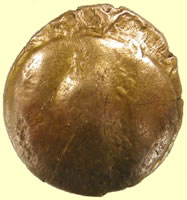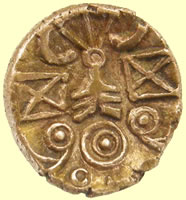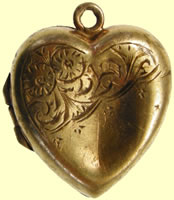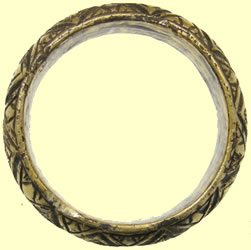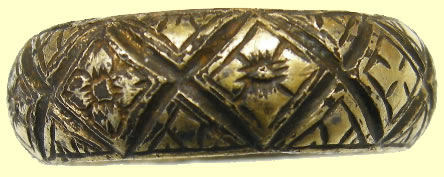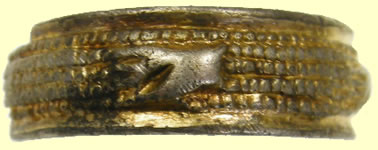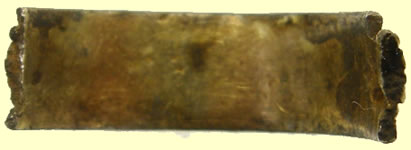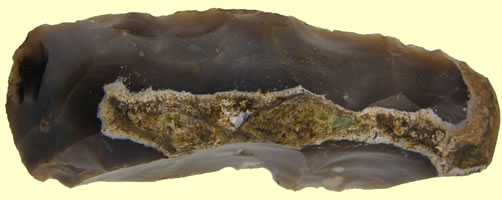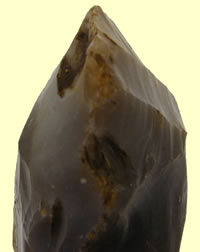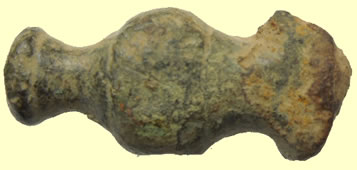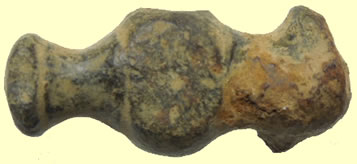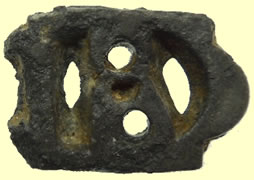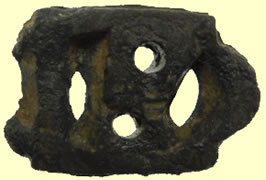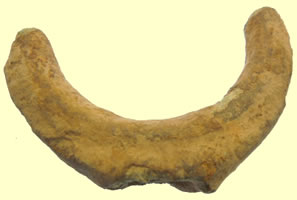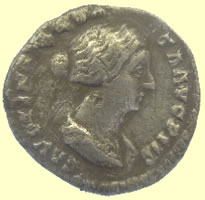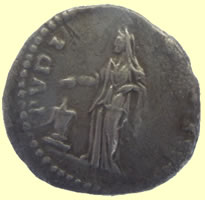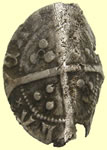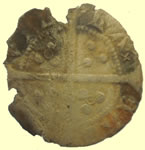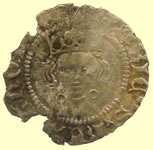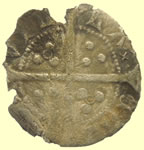

Metal detecting holidays in England with the World's most successful metal detecting club.
Twinned with Midwest Historical Research Society USA
| 2014 March finds page 2 |
  |
|||
| 1892 Victoria old bust milled gold half sovereign (120 pence) | |||
 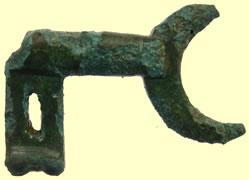 |
|||
| Medieval key | |||
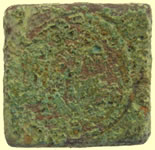 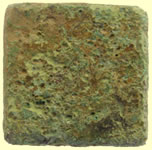 |
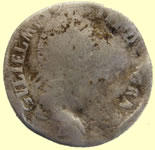 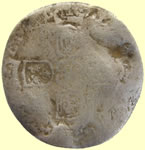 |
||
15thC Gold Angel coin weight |
1696 William III milled silver sixpence - Exeter mint | ||
  |
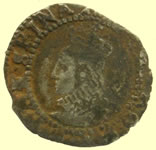 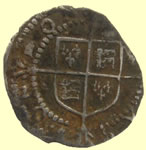 |
||
| 2ndC Roman fibular brooch | 16thC Elizabeth 1st hammered silver penny | ||
  |
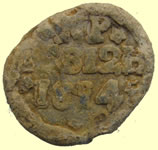 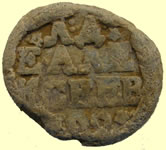 |
||
1247 Henry III hammered silver voided long cross half penny Rev /NIC/OLE - Moneyer Nicole |
1812 Russian lead bale seal | ||
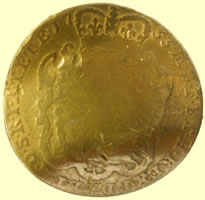  |
|||
| 1733 George II milled gold full guinea love token | |||
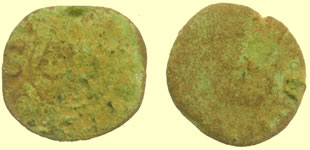 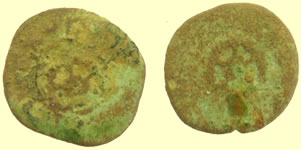 |
|||
| 1634 Charles 1st hammered copper rose farthings | |||
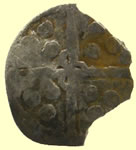 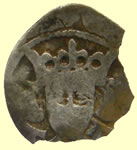 |
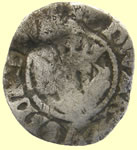 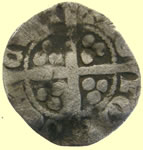 |
||
1461- 1483 Edward IV hammered silver penny - Rose in centre of reverse cross - Local Durham mint Obv +ED ******* |
1272 Edward 1st hammered silver penny Obv + EDWAR ANGL DNS HYB Rev CIVI/TAS/LON/DON- London mint |
||
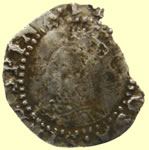 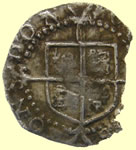 |
 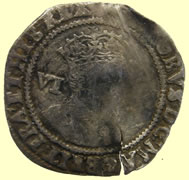 |
||
| 1569-71 Elizabeth 1st hammered silver penny | 1606 James 1st hammered silver sixpence | ||
  |
|||
Medieval silver engraved band - reported to museum as treasure
|
|||
 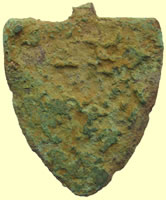 |
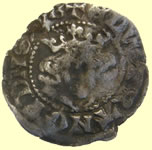 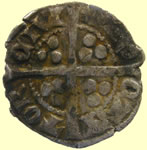 |
||
13thC medieval heraldic shield pendant Lion facing left |
1272 Edward 1st hammered silver penny- tall crown class 10 Obv + EDWAR ANGL DNS HYB Rev CIVI/TAS/CAN/TOR- Canterbury mint |
||
 |
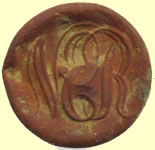 |
|
|
| 17thC clothing fastener | North Eastern Railway button | Medieval strap end | |
 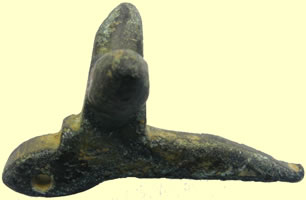 |
|||
1650-1700 Cast copper alloy thumb rest from a drinking vessel or tankard PAS record match BERK-641406 |
|||
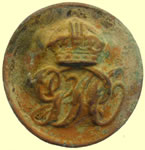 |
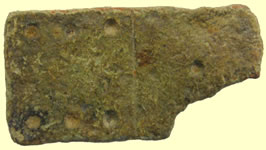 |
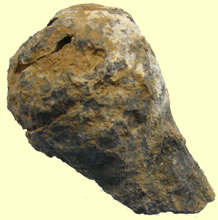 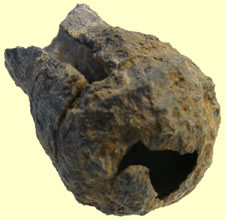 |
|
| General Post Office button | Georgian domino | 17thC Pewter knife handle | |
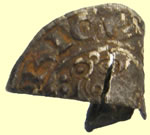 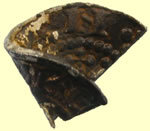 |
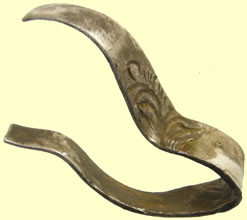 |
||
| 1215 Henry III hammered silver short cross half penny | 1893 Birmingham silver ring date letter t | ||
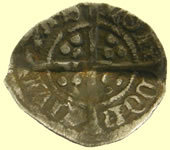 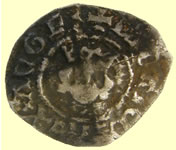 |
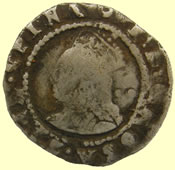 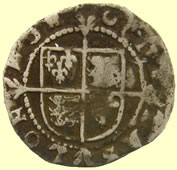 |
||
1377-1399 Richard II hammered silver half penny Obv + RICARD REX x ANGL' Rev CIVI/TAS/LON/DON- London mint |
1587-9 Elizabeth 1st hammered silver half groat | ||
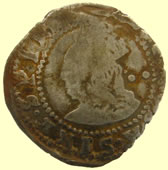 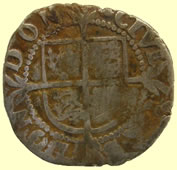 |
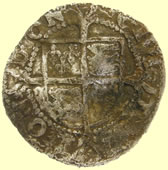 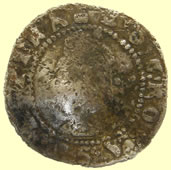 |
||
| 1582-3 Elizabeth 1st hammered silver half groat | 1592-5 Elizabeth 1st hammered silver half groat | ||
  |
 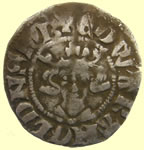 |
||
| Taco'd Medieval short cross hammered silver penny | 1272 Edward 1st hammered silver penny- Class 10 Obv + EDWAR ANGL DNS HYB Rev CIVI/TAS/LON/DON- London mint |
||
 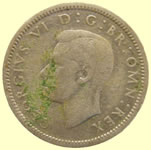 |
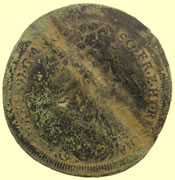 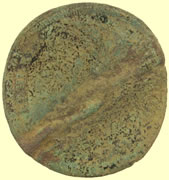 |
||
| 1938 George VI milled silver sixpence | 1689- 94 William and Mary type jetton Kings' diademed bust right Obv WILLH.IIID.G.ANG.SCO.FR.ET.HI.REX Rev Queens head diademed bust right Ref Mitchiner 1804 |
||
 |
 |
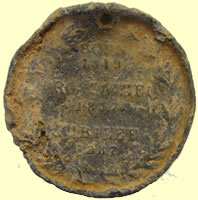 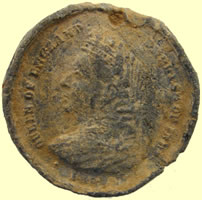 |
|
| 16thC Tudor button | Victorian silver mount - B | 1887 Victoria jubilee medallion | |
|
 |
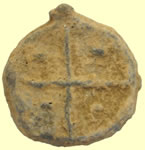 |
|
| Medieval gilded mount | 1500-1700 shield mount | 15thC lead token | |
  |
 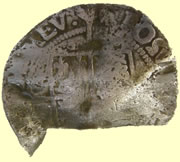 |
||
1422-61 Henry VI hammered silver half penny Ob+hE ****** X ANGL Rev CIVI/TAS/LON/DON - London mint |
1553 Mary hammered silver groat | ||
 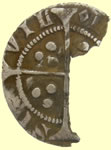 |
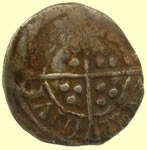 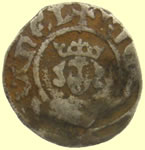 |
||
1432-61Henry VI hammered silver penny - mascle before L Obv +hEN **** ANGLIE Rev VIL/v L *** /STRI - Newcastle mint |
1377-1399 Richard II hammered silver half penny Obv + RICARD REX x ANGL Rev CIVI/TAS/LON/DON- London mint |
||
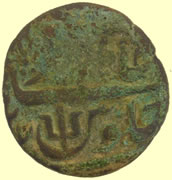 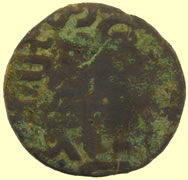 |
 |
||
| Asian coin ?? | 15thC casket key | ||
 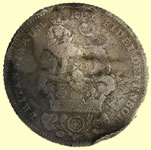 |
  |
||
| 1828 George IV milled silver sixpence | 1418- 1437 Charles VII Paschal lamb type jetton, Bourges Paschal lamb standing with one foot raised head nimbate Obv+ GETES star DIEV star FALIR Simple single armed cross patty with lis bewtween each arm Rev + AMIES star DIEV star ET star LO Ref Mitchiner 558 |
||
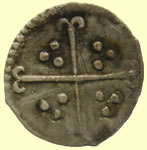 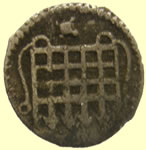 |
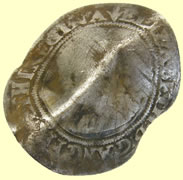  |
||
| 1594-6 Elizabeth 1st hammered silver half penny | 1561-5 Elizabeth 1st hammered silver sixpence - Pheon mint mark | ||
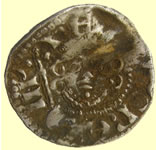 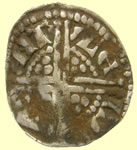 |
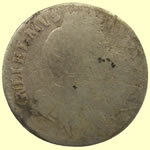 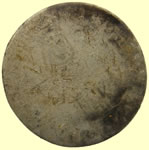 |
||
1247 Henry III hammered silver voided long cross penny- Class 5 Obv hENRICVS REX III Rev ANT/ALE/EIN/- Moneyer alein of Canterbury mint |
1696 William III milled silver sixpence | ||
  |
|
||
| Georgian gilded silver watch winder | Silver pin head on copper - reported as possible treasure | ||
 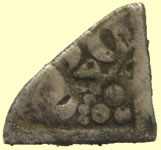 |
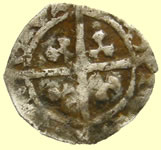 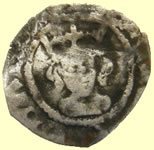 |
||
1247 Henry III hammered silver voided long cross qtr penny Rev /ERO/ - Moneyer Rener or Roger |
1327 - 77 Edward III hammered silver farthing (1/4 penny) Rev ***** REX ANGL Rev CIVI/TAS/EBO/RACI - York mint |
||
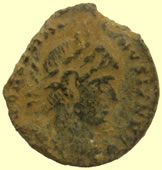 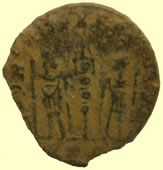 |
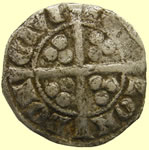 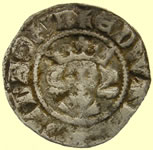 |
||
| Mid 4thC Roman bronze sent for ID | 1272 Edward III hammered silver penny Obv +EDWAR ANGL DNS HYB Rev CIVI/TAS/LON/DON- London mint
|
||
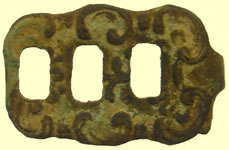 |
 |
 |
 |
| 18thC clog fastener | Neat 20thC alloy cross | Roman buckle tongue | 18thC Royal artillery button |
 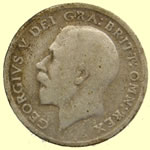 |
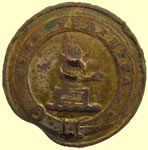 |
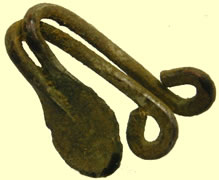 |
|
| 1921 George V milled silver sixpence | 19thC livery button | 17thc clothing fastener | |
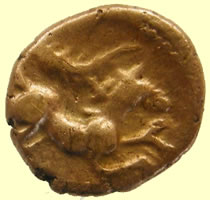 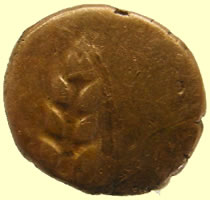 |
|||
10-40 AD Cunobelin qtr gold stater - sent to CCI for recording 1.31g, 11.16mm |
|||
  |
 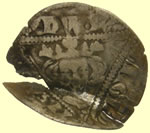 |
||
1247 Henry III hammered silver voided long cross half penny Rev /hEN/RIO- Moneyer Henri |
1279 Irish Edward 1st hammered silver penny Trefoil of pellets on Kings breast Obv EDWR ANGL DNS HYB Rev CIVI/ TAS /DVBL/INIE - Dublin mint |
||
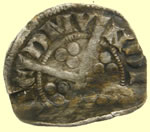 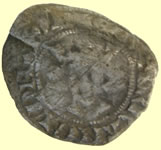 |
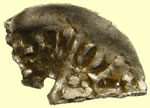  |
||
1272 Edward 1st hammered silver penny - Class 10 Obv +EDWAR R ANGL DNS HYB Rev VIL/SCIE/DMV/NDI- Bury St Edmunds mint |
1247 Henry III hammered silver voided long cross half penny | ||
  |
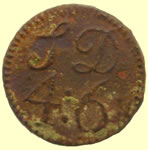 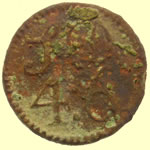 |
||
1377-1399 Richard II hammered silver half penny - Type 1B (iii) Annulat on breast- Barred A is reverse die of Edward III Obv + RICARD x REX x' ANGL Rev CIVI/TAS/LON/DON- London mint |
1760 - 1773 shilling and 6 pence coin weight - British issued toweigh Portuguese moidore and 'joe' series of gold coins | ||
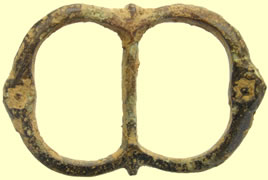 |
 |
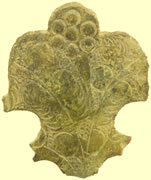 |
|
| Huge, Post Medieval cast copper alloy single loop buckle frame.
1500-1650 AD |
Victorian Royal Engineers button | 17thC mount | |
 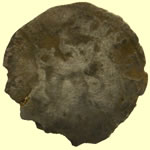 |
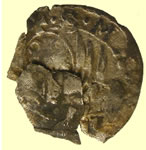 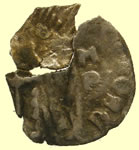 |
||
1461- 1483 Edward IV hammered silver penny - Quatrefoil with pellet at centre of reverse cross Rev CIVI/TAS/EBO/RACI - York mint |
15thC Venitian Soldino hammered silver coin | ||
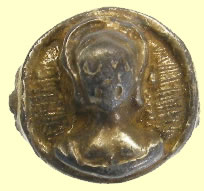 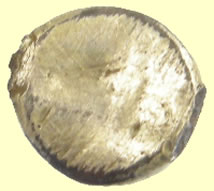 |
|||
Tiny late medieval gilded silver ring top - Madonna bust ?? Reported as treasure to museum 9.86mm dia , 1.24g |
|||
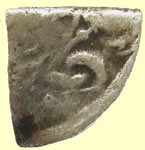 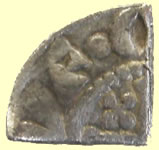 |
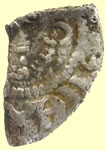 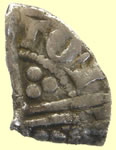 |
||
1199 John hammered silver short cross farthing - Class 4 to 5 Obv hENRICVS REX Rev VE.O - Moneyer Heve of Canterbury mint |
1247 Henry III hammered silver voided long cross half penny Rev TOM/ Moneyer Thomas |
||
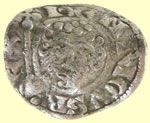 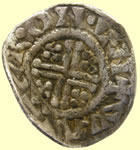 |
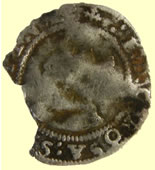 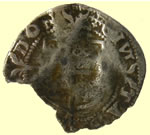 |
||
1204 John hammered silver short cross penny - Class 5 Rev hENRICVS REX Rev +WALTER.ON.LVN Moneyer Walter of London mint |
1560-1 Elizabeth 1st hammered silver half groat | ||
  |
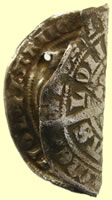  |
||
1247 Henry III hammered silver voided long cross half penny Rev NT/NIC/ Moneyer Nivole of Canterbury mint |
Taco'd 1351 -61 Edward III hammered silver groat Obv + EDWAR **** ANGL o Z FRANC hYB Rev CIVI/TAS/LON/DON- London mint 27.08mm |
||
 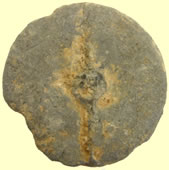 |
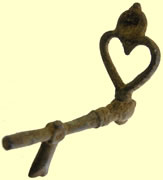 |
 |
|
| Medieval lead button | Georgian watch winder | George V coronation medallion | |
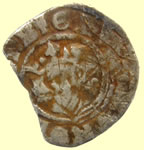 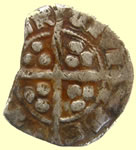 |
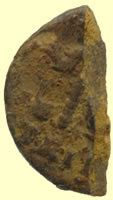 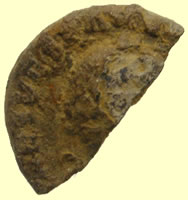 |
||
1272 Edward 1st hammered silver penny Obv +EDW** ANGL DNS HYB Rev CIVI/TAS/LON/DON- London mint |
2ndC Roman silver coin - cooking to remove crust | ||
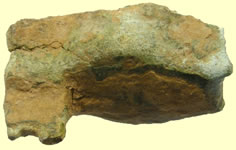 |
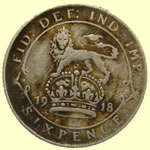 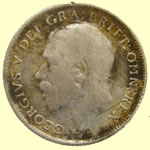 |
||
| Medeival bronze key | 1918 George V milled silver sixpence | ||
  |
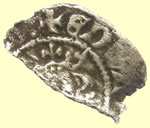  |
||
| 1215 Henry III hammered silver half penny | 1327 Edward III hammered silver penny Obv + EDWA *** hYB Rev CIVI/TAS/LON/DON- London mint |
||
 |
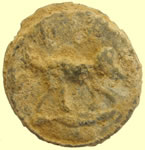 |
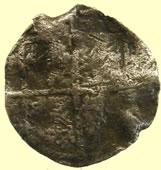  |
|
| 16thC Tudor button | 17thC lead token | 1603 James 1st hammered silver half groat | |
|
|||
Very interesting Celtic gold qtr gold stater - sent to CCI for ID and recording Reminds me of a 50BC North Thames type 1.54g, 13.51mm dia
Size comparsion between a qtr and a medeival half penny |
|||
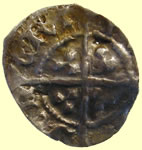  - - |
  |
||
Rare find - our first ever annulet mint mark I have seen on a coin found here 1471-2 Edward IV hammered silver half penny - im annulet - Type 2h Obv EDWARD DI REX AN Rev CIVI/TAS/LON/DON- London mint 0.33g, 12.87mm |
1704 French Louis XIV milled silver 10 sols | ||
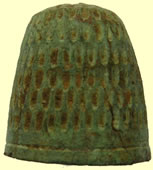 |
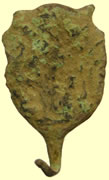 |
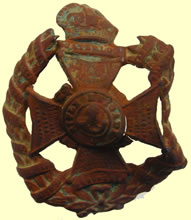 |
|
| 15thC thimble | 17thC clothing fastener | Rifle Brigade badge | |
|
|||
17th/18thC gold posy ring - reported as treasure to museum 'TRUE TO THEE ILE EVER BE' 19.25mm dia, 3.69g Maker AW (Old English Script) No hall marks |
|||
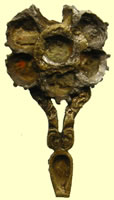 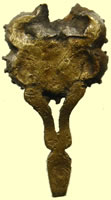  |
|||
16thC enamelled sectioned gilded silver top and solid gold decorated pendant- reported as treasure to museum Is it a fancy eye wax scraper by the bowl shaped end ?? 0.84g, 19.36mm L |
|||
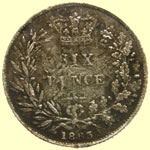 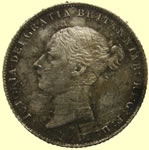 |
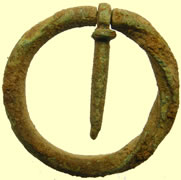 |
||
| 1863 Victoria milled silver sixpence | Medieval twisted annular brooch | ||
 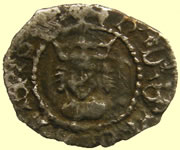 |
 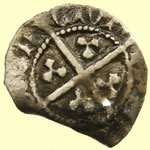 |
||
1485 Henry VII hammered silver half penny- Brush hair - single arched crown Obv hENRIC DI GRA REX Rev CIVI/TAS/EBO/RACI - York mint 0.32g, 11.79 |
1471 Edward IV hammered silver half penny - im short cross fitchee Obv + EDW *** REX Rev Rev CIVI/TAS/LON/DON- London mint 0.47g,12.77 |
||
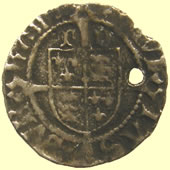 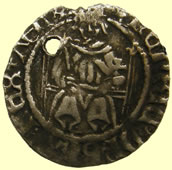 |
|||
1509 -26 Henry VIII hammered silver sovereign penny - TD by shield Bishop Thomas Ruthall Durham mint 0.7g,15.33 Thomas Ruthall (Ruthal, Rowthall) (died 4 February 1523) was an English churchman, administrator and diplomat. He was a leading councillor of Henry VIII of England
|
|||
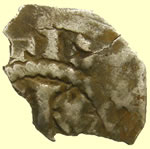 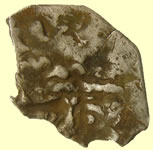 |
  |
||
| 1158 -1189 AD Henry II hammered silver penny ' Tealby' cross and crosslet type | 1649 Commonwealth hammered silver half groat | ||
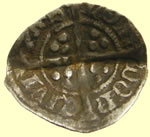 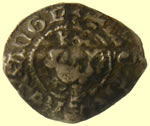 |
 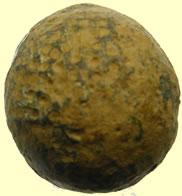 |
||
1377-1399 Richard II hammered silver half penny - type 1e Obv +RICHARD x REX x ANGL' Rev CIVI/TAS/LON/DON- London mint |
Medieval beehive thimble | ||
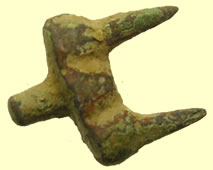 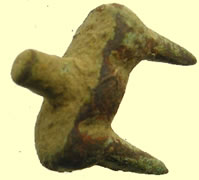 |
|
||
| Unknown spiked mount | Medieval bar mount | ||
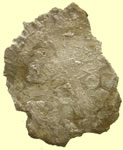 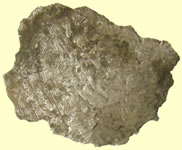 |
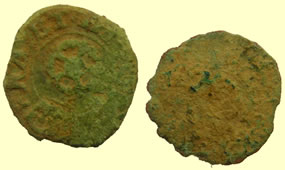 |
||
| Toasted Medieval hammered silver long cross penny | 1634 Charles 1st hammered coppper rose farthings | ||
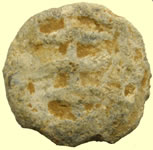 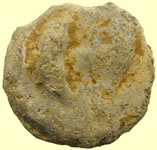 |
 |
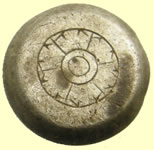 |
|
| 17thC lead token | 1900's Generic merchant navy button | 18thC silver Royal Navy button | |
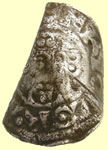 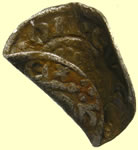 |
  |
||
1204- 5 John hammered silver short cross penny - Class 5b - Egg wasted S Obv hENRICVS R.EX Rev .ON.EVE - York mint |
Taco'd 1272 Edward 1st hammered silver penny Obv + ED **** Rev CIVI/TAS/EBO/RACI - York mint |
||
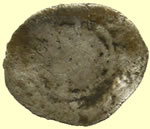 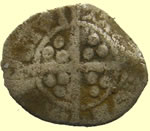 |
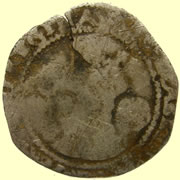 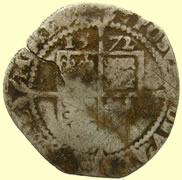 |
||
1285/6 Edward 1st hammered silver farthing - new issue inner circle both sides - Type 28 Oval flan Rev CIVI/TAS/EBO/RACI - York mint |
1572 Elizabeth 1st hammered silver sixpence | ||
 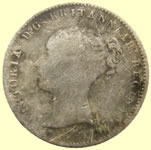 |
  |
||
| 1846 Victoria milled silver four pence | 1247 Henry III hammered silver voided long cross half penny Rev IC/OLE - Moneyer Nicole |
||
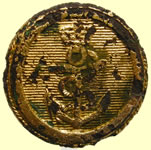 |
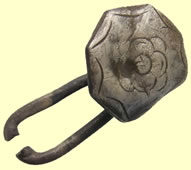 |
  |
|
RN Capt / Commander - 1812 |
18thC silver Royal Navy cuff link | 1816 George III milled silver sixpence | |
  |
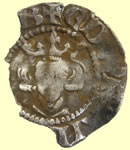 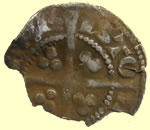 |
||
| 1247 Henry III hammered silver voided long cross half penny | 1272 Edward 1st hammered silver penny Obv + EDWR ANGL DNS HYB Rev VILL/ABR/ISTO/LLIE - Bristol mint |
||
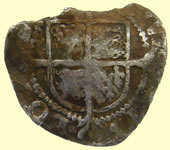 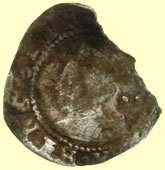 |
 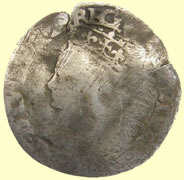 |
||
| 16thC Elizabeth 1st hammered silver half groat | 1553 Mary hammered silver groat | ||
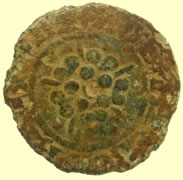 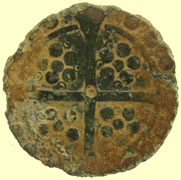 |
|||
Rare English jetton, 1345/55 Late pictorial issues of the mid century : This type with the obverse as a rose is not in Mitchiner but could be a mule with Mitchiner 186 Obv Barbed rose 5 petals, border fictitious legend Rev Long cross patonace , 6 pellet clusters in each angle, border pellets Ref Mitchiner 245 |
|||
 |
 |
  |
|
| 16thC Tudor button | 1500-1700 mount | 1247 Henry III hammered silver voided long cross half penny- Class 5 Obv hENRICVS REX III Rev /ANT/NIC/ Moneyer Nicole of - Canterbury mint |
|
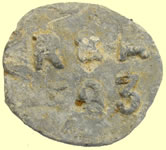  |
 |
||
| 17thC Dutch lead bale seal | Post Tudor S buckle | ||
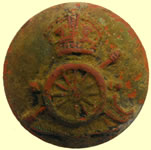 |
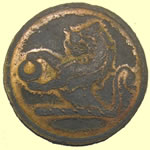 |
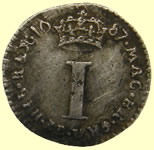  |
|
| WWII Royal artillery button | 19thC livery button | 1687 James II milled silver one pence | |
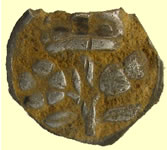 |
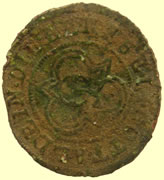 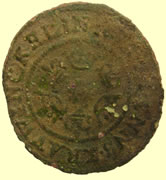 |
||
| First 17thC silver button of this type I have seen with rose and thistle commemorating the marriage of Charles II - reported as treasure to museum | 1586 Hans Krauwincel II Rose orb Jeton HANNS KRAVWINCKEL IN NVRENB |
||
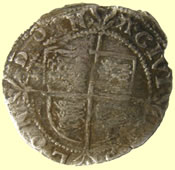 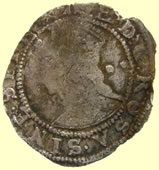 |
  |
||
| 1582-4 Elizabeth hammered silver half groat - A mint mark | 1625 Charles 1st hammered silver penny | ||
 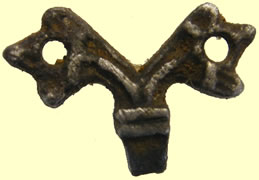 |
|||
| Medieval silver hooked mount - reported to museum as treasure | |||
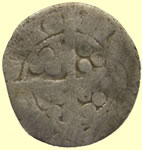 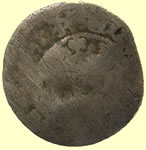 |
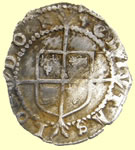  |
||
| 1272 Edward 1st hammered silver penny | 1582 Elizabeth hammered silver penny - sword mint mark | ||
   |
|||
| Interesting medieval widget - latch key end ? | |||
 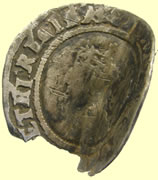 |
 |
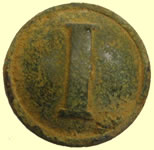 |
|
| 1570 Elizabeth 1st hammered silver sixpence | MN - G & J Burns Ltd In use 1842 - 1922 | 1865 USA civil war block I button | |
Gold face plates in triangular cross-section secured by a binding strip
Bronze Age Tress Ring C1000BC Lock-RingsOrnaments, whose function is unknown, made from gold plates in triangular cross-section and secured by a binding strip, resulting in a hollow ring. The face plates can be decorated with repoussé decoration or with fine concentric incised lines imitating fine wire works. More rarely, lock-rings are made from face plates obtained from individual gold wires soldered together. References
|
|||
Reported to museum as treasure Complete with diamond shaped end knops 3.12g,27.07mm long
|
|||
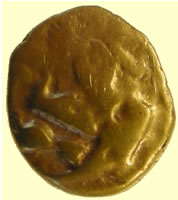 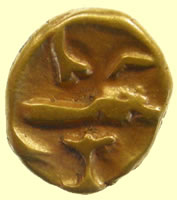 |
|||
70BC Morini Celtic gold qtr stater - sent to CCI for recording and reported as hoard to museum 1.45g, 10.75mm |
|||
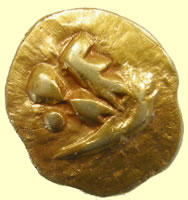 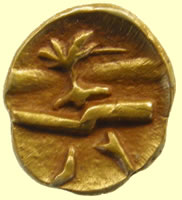 |
|||
70BC Morini Celtic gold qtr stater - sent to CCI for recording and reported as hoard to museum 1.14g, 11.52mm |
|||
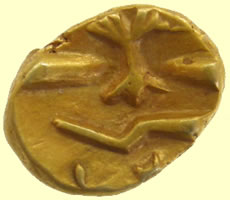 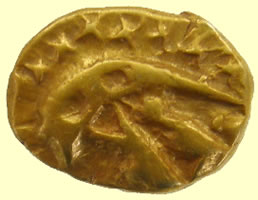 |
|||
70BC Morini Celtic gold qtr stater - sent to CCI for recording and reported as hoard to museum 1.46g, 11.55mm |
|||
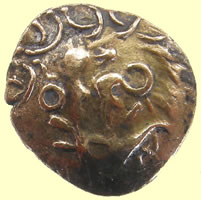  |
|||
50 BC Trinovantes British G “Clacton” Celtic gold qtr stater - sent to CCI for recording and reported as hoard to museum 1.29g,14.45mm |
|||
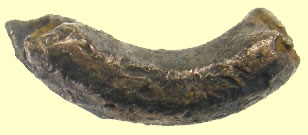 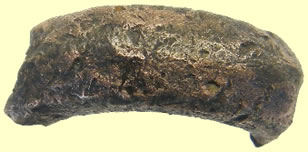 |
|||
| Celtic gold ingot - probably Clacton type by by the impurities - reported as potential treasure to museum | |||
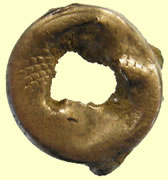  |
 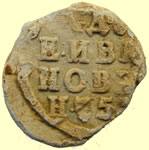 |
||
| Hollow gold ring - interesting decoration - sent to museum for their views in case it is treasure | 1793 Russian lead bale seal | ||
 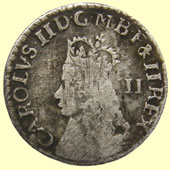 |
|||
| Stunning early 1660-85 milled silver Charles II milled silver half groat - 2nd Issue mint mark Crown on rev only - without inner circles | |||
|
|||
| Early silver ring with rough cut diamonds - reported as treasure to museum | |||
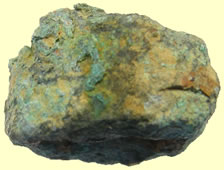 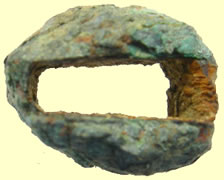 |
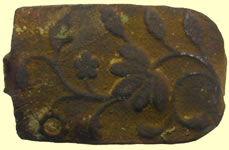 |
||
| Medieval knife quillion | 18thC clog fastener | ||
 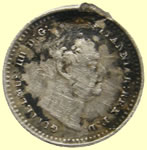 |
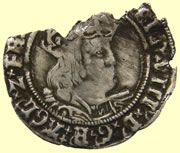  |
||
First one I have ever seen - 1836 William IV milled silver one and a half pence This coin was for colonial use |
Stunning strike of a 1526 -44 Henry VIII hammered silver groat - arrow mint mark | ||
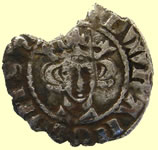 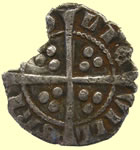 |
 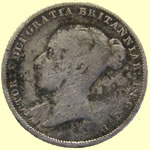 |
||
1272 Edward 1st hammered silver penny Obv + EDWR ANGL DNS HYB Rev VILL/ABR/ISTO/LIE - Bristol mint |
1856 Victoria milled silver sixpence | ||
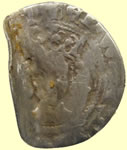 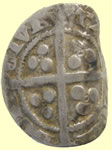 |
 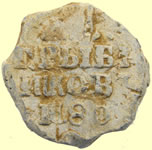 |
||
1351 Edward III hammered silver penny - Pre-Treaty London A , extra annulets in all 4 quadants Obv + EDWAR DVS:REX: ANGLIE Rev Rev CIVI/TAS/LON/DON- London mint |
1839 Russian lead bale seal | ||
|
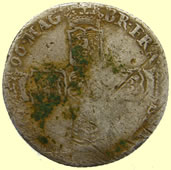 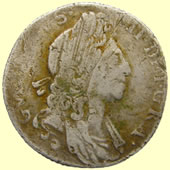 |
||
| Unlisted in Norweb 17thC John Hubert , IHB - hammered copper trade farthing | 1696 William III milled silver shilling | ||
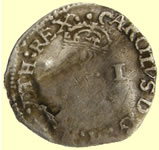 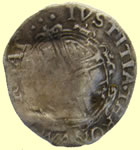 |
  |
||
1641-3 Charles 1st hammered silver penny - mintmark 2 dots |
1607 James 1st hammered silver sixpence | ||
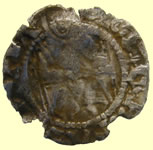  |
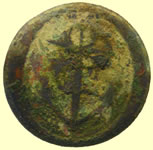 |
 |
|
1526-44 Henry VIII hammered silver sovereign penny - (Duram) TW by shield Bishop Thomas Wolsey |
RN Capt / Commander - 1825 |
Generic Merchant Navy Officers |
|
 |
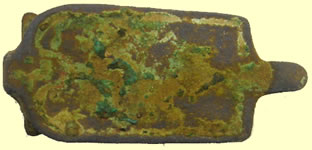 |
||
| Georgian glass fob seal - Man leaning against anchor | 18thC clog fastener | ||
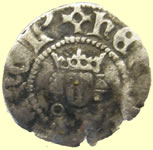 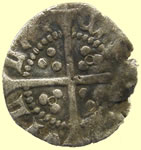 |
|
||
1422-61 Henry VI hammered silver half penny - A.2., roundabout mint mark- annulets in opposing quadants on reverse, annulets to side of neck Obv + hENRIC ** ANGL' Rev VIL/LAx/CAL/IS - Calaise mint |
Georgian silver collar stud - missing stone | ||
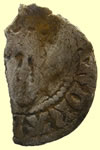 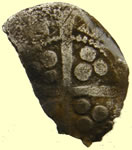 |
 |
||
1272 Edward Ist hammered silver penny - Class 10ab Obv EDWARD R ANGL DNS HYB |
Roman buckle tongue | ||
 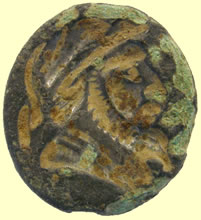 |
|||
| Double sided Georgian fob seal matrix | |||
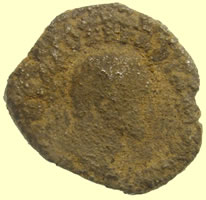 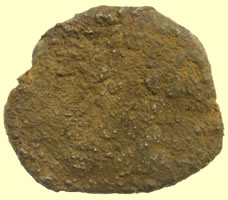 |
|||
2nd C Roman silver coin sent for provisional ID - cannot ' cook' this coin as it is part of new hoard I just reported 2.98g, 19.30mm This is, I'm sure you're aware, sort of a nearly-impossible challenge. However, one thing that "pops out at me" is that the bust appears not to be wearing any crown - no laurel, diadem or radiate is visible, neither are there any perceptable "wreath ties" hanging behind the head/neck. Although the portrait - at least in this vague configuration - does not particularly resemble him, what first comes to mind is Constantius Gallus. He was a short-lived cousin of the sons of Constantine who, never advancing beyond Caesar before he pissed-off Constantius II sufficiently to relieve him of his head altogether, was only ever portrayed bare-headed - as was the custom for Caesars after the death of Constantine I. Here's an example of a Constantius Gallus majorina with unbroken legend: http://www.stoa.org/gallery/album167/39_Gallus_FTR_CYZ_1 A lot of his coinage shows him with a legend broken by his head, but as you can see, the legend is continuous around his head in the example above - this was also a post-Constantinian tradition for new Ceasars or Augusti - the minor or associate was shown with a smaller portrait head accomodating an encircling legend. When he had achieved a certain seniority, his portait was enlarged and the legend broken to accomodate it: Later in his short reign, he was portrayed thusly: http://www.stoa.org/gallery/album167/41_Gallus_FTR_ALE Other folks who were portrayed bare-headed who might be likely to show up in your digs are the brothers Magnentius & Decentius - it was they whose coins formed the bulk of one of the earlier hoards you dealt with - a couple years ago. They tended to be portayed with serious "helmet-hair" as part of a mullet - a very silly-looking hairdo, IOW. Julian II was Caesar for a relatively long time before his relatively brief time as Augustus - his coins as Caesar also portray him bare-headed. http://www.stoa.org/gallery/album167/50_Julian_FTR_ARL Of course, if my initial impression of a bare-headed portrait turns out to be mistaken, all of the preceeding becomes relatively meaningless. Mark |
|||
  |
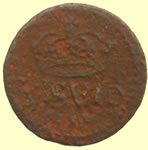 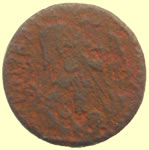 |
||
1215 Henry III hammered silver short cross half penny
|
1604-19 James 1st - gold half angel coin weight , 2nd coinage revalued Obv Crown over Vs VI D (5 shillings and 6 pence) Rev Angel |
||
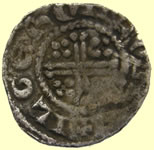 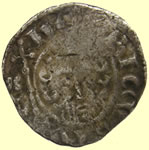 |
 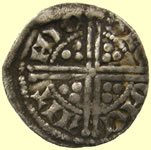 |
||
1217/8 Henry III hammered silver short cross penny - Class 7 Obv hENRICVS REX Rev +ILGER ON LVNDE - Moneyer Ilger of London mint |
1247 Henry III hammered silver voided long cross penny - Class 5b Obv hENRICVS REX III Rev NIC/OLE/ONC/ANT/ Moneyer of Canterbury mint |
||
|
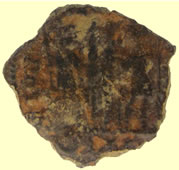 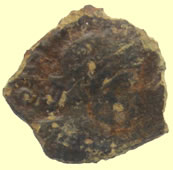 |
||
2 - 4thC Roman bronze coin sent for ID - reported as hoard to museum The other, the GLORIA EXERCITVS, could be from any of the members of the family of Constantine, c. 330-336. Mark |
4thC Roman bronze coin sent for ID - reported as hoard to museum Yes, you're correct that this is a GLORIA EXERCITVS Centenionalis. It has two standards between the soldiers, so it dates to the earlier period of emissions for the GLORIA EX's - 330-335 or thereabouts. I can't give you a firm ID on the obverse, but it is one of the CONstantine crew. "...ONS..." is quite clearly legible at 9:00. If I had to hazard a guess, I'd say the portrait favors the paterfamilias - Constantine I, "The Great" - although by this time the portraiture was already deteriorating to an extent that you really can't be absolutely certain whose portrait was intended merely by looking at portraits. Mark |
||
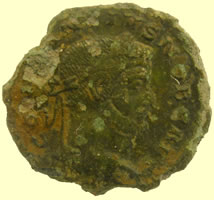 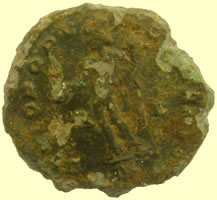 |
 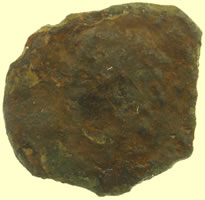 |
||
2ndC Roman bronze coin sent for ID - reported as hoard to museum 6.44g, 25mm This one appears to be a GENIO POPVLI ROMANI follis of Constantius I as Caesar. A member of the original Tetrarchy, he lived only a very short time - 13 months or so - after his elevation to Augustus at the abdication of Diocletian and Maximian. He was the father of Constantine the Great - and died at York. This dates to 293-305 AD - at the size and weight, despite being obviously chipped to a fairly serious extent, probably can be further dated to the later part of that period as the follis was shrinking from its original "half-crown" size as introduced by Diocletian in the late 280's. |
2ndC Roman bronze coin sent for ID - reported as hoard to museum 6.73g,27mm I will take it as a complement that you might think I could tell you anything from a photo of this grot - I will take a wild leap, however, and say that the "severe" looking profile of the portrait puts me in mind of Claudius Gothicus. If that's a radiate crown he's wearing, it would be a further endorsement as you are highly unlikely to find a coin of Gothicus on which he is not shown radiate. Hmmm - I should have looked at your metrics first. It's way too big to be a Gothicus antoninianus. This, I'd guess, is a fragment of a follis somewhat like the Constantius I, Caesar I already ID'd for you. As a middling-sized follis, it could be any one of 7-10 possible imperials. It's unfortunate that no details are visible on the reverse - that would be a major help in narrowing-down the field of "contestants" or dating it more closely - as it is, we can call it approximately 295-315 AD. Mark |
||
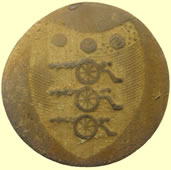 |
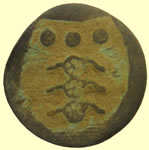 |
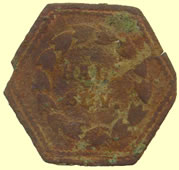 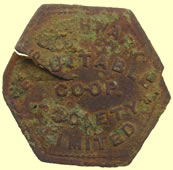 |
|
| 18thC Royal artillery button | 18thC Royal artillery cuff button | 19thC Southwark Co -op Half Sovereign (10 shillings) token | |
 |
|||
Huge chunk of 1826 silver and bits - London hall mark, date letter I Silver hinged hip flask cap ? |
|||
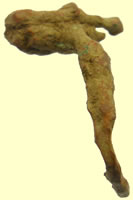 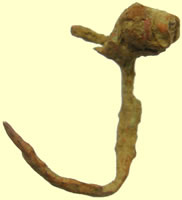 |
 |
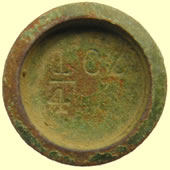 |
|
| 2ndC Roman fibular brooch | Red Cross button ? | Victorian 1/4 oz trade weight | |
|
|||
9 - 2nd to 4thC C Roman bronze coin - illegible - reported as hoard to museum
2ndC Roman bronze coin - sent for ID and reported as hoard to museum 23mm,5.53g the large one seems at its size and weight most likely to be an As of Antoninus Pius (only the portrait is usable here, so it is somewhat of a guess, but it does tend to look more like Ant Pius than any of the other typical suspects. His reign was 138-161. The other, the GLORIA EXERCITVS, could be from any of the members of the family of Constantine, c. 330-336. Mark
|
|||
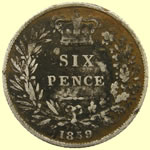 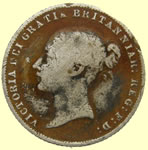 |
 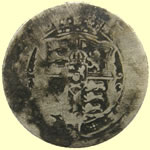 |
||
| 1839 Victoria milled silver sixpence | 1817 George III milled silver sixpence | ||
 |
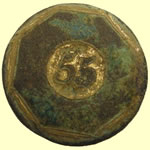 |
|
|
| George 1st tardew eight - Cown G cipher London | 55th Regiment of Foot Officer - 1800-1820 |
Georgian silver name tag 35 Ely Place |
|
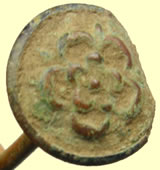 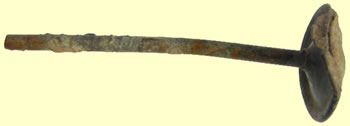 |
 |
 |
|
| Tudor rose decorated hat pin ? | 18thC Royal artillery button | A complete cast copper alloy buckle of post-medieval date. The buckle is a double loop asymmetrical shape Circa 1575- 1700 |
|
 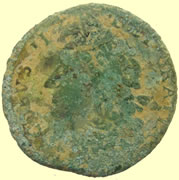 |
 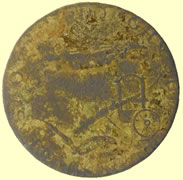 |
||
| May 1689 James II emergency gun metal shilling (12 pence) | 1792 Norfolk Norwich Halfpenny Condor Token OBVERSE: The arms of Norwich; castle and lion. REVERSE: A plough and shuttle. SUCCESS TO THE PLOUGH AND SHUTTLE. EDGE: Plain. |
||
 |
 |
||
| Georgian clock hand | Post medieval dragon buckle | ||
 |
 |
 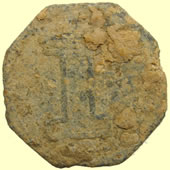 |
|
| Early Fire Brigade button | 1250- 1400 buckle |
20thC Sole of London 1 shilling trade token | |
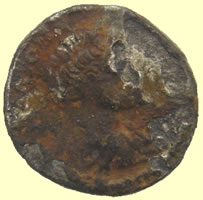 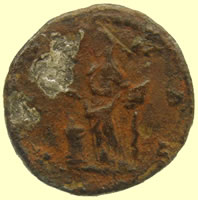 |
|||
2ndC Roman silver coin sent for ID - cooking to remove crust (GaB) I guess I didn't get back to you on this one - I can't be 100% certain since the obverse legend is all but illegible and the back of the head could be any one of half a dozen young late 2nd-early 3rd century Imperials, but I believe this is a youthful portrait of Caracalla - probably when he was still Caesar under his father, Septimius Severus (195-198). The reverse type is plausible for Caracalla Caesar - PIETAS Piety standing left sacrificing over small altar and holding box of incense. If the obverse leged becomes clearer with cleaning, I suspect it will be "M AVR ANTON CAES PONTIF" - the single really clear letter of the obverse legend - the "O" - is in the correct place for this to be the legend. Mark |
|||
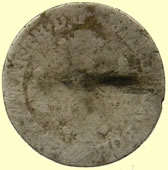 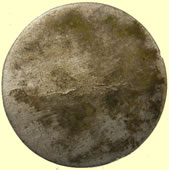 |
 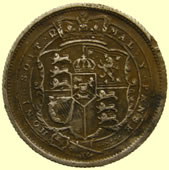 |
||
| Continental milled silver coin ?? | 1818 George III milled silver shilling | ||
  |
|||
Huge AD1 to AD 200 Roman concave bronze bucket handle mount 74mm high |
|||
  |
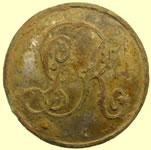 |
 |
|
| 1634 Charles 1st hammered copper rose farthing | 19thC livery button | WWII Army Service Corp badge | |
 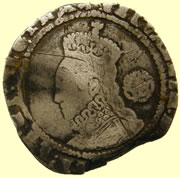 |
 |
 |
|
| 1575 Elizabeth 1st hammered silver sixpence | Georgian copper pendant | Georgian mount | |
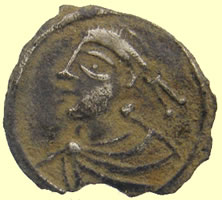 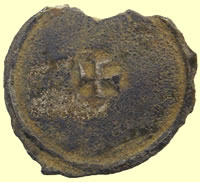 |
|||
Saxon hammered silver penny - sent to Fitzwilliam museum for recording and ID This is 975 - 978 AD Edgar, Edward the Martyr or Æthelred II First Small Cross. I have recorded it as EMC 2014.0097. |
|||
 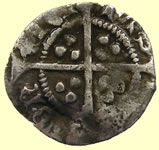 |
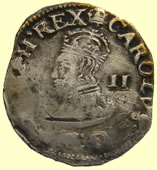 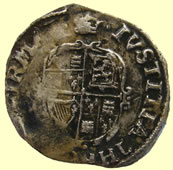 |
||
1422 -61 Henry VI hammered silver half penny - Pinecone - mascle issue Obv hENRICVS REX (mascule) ANGL Rev CIVI/TAS/LON/DON- London mint |
1635- 6 Charles 1st hammered silver half groat- Crown mint mark | ||
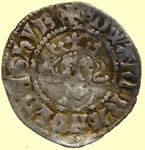 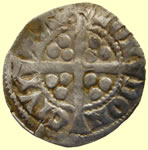 |
  |
||
1272 Edward Ist hammered silver penny - Class 10ab Obv EDWARD R ANGL DNS HYB Rev CIVI/TAS/LON/DON- London mint |
1247 Henry III hammered silver voided longcross halfpenny Obv VND/NIC - Moneyer Nicole - of London mint |
||
  |
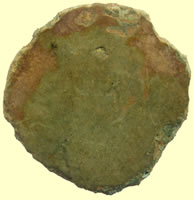 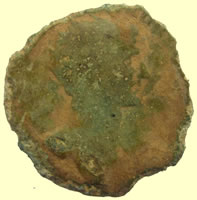 |
||
4thC Roman bronze coin sent for ID You had the photo of the reverse upside-down - it's a galley with mast & ropes. This is a so-called "Radiate Quinarius". It is supposed to have been a "half antoninianus" of Allectus, the short-lived successor to Carausius as emperor of the British Empire. Carausius did a fairly good job of keeping up appearances after deciding that making himself the local emperor had a better future than admitting to the emperor in Rome that he did a better job as a pirate than he did clearing the seas of pirates. He evidently was a pretty clever fellow and managed to do a pretty good job from 287-293 of running the Islands in the absence of an actual Imperial administrative presence - he actually went so far as to strike an unprecendented type of antoninianus with 3 collated busts - Diocletian, Maximian and himself - in an attempt to legitimize his rule further. His "prime minister" Allectus had him murdered in a court intrigue, then took over in his stead, but was nowhere near so good of a military leader or as cunning. When Constantius I was dispatched to deal with the rebellion in 296, he made short work of Allectus. The well-known "Lord Selborn" or Blackmoor hoard of coins (some 10's of thousands of pieces - one of the largest ever found) is presumed to be Allectus' war chest, buried for safekeeping before the final battle from which, evidently, no one who knew of the treasure emerged alive or able to claim it. This hoard is extremely important in terms of recording the official-issue coins vis-a-vis the so-called "barbarous" contemporary copies, et, of the era. You have a very clear "Q C" mintmark for the mint at Clausentum, Camelodunum or as you know it, Colchester. |
2ndC Roman bronze coin sent for ID this is a Dupondius. You can tell by the points of the radiate crown on the portrait. There obviously is very little else to see on this piece so the ID must be based on pattern-recognition and guesswork. I am pretty positive that this is Antoninus Pius - 138-161 AD. I don't have a really attractive Antoninus Pius Dupondius to show you, but this one isn't too bad... http://www.stoa.org/gallery/album93/18_A_Pius_Dup_Providentia This one from ACE's prize stock is a little better and shows the points of the radiate crown a little more clearly - the 2nd century was a period of relative calm and long-reigning emperors. Workhorse denominations like sestertii and dupondii remained in circulation for a long time and are more often than not encountered in well-worn conditions: I don't know if this URL will work for you, this is in a password-protected section of my website Mark |
||
|
|||
| c10thC Saxon zoomorphic strap end | |||
|
|||
| c10thC Saxon zoomorphic cord/strap end | |||
 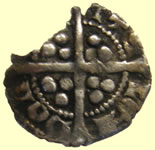 |
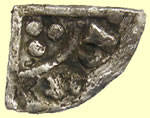  |
||
1300 -1310 Edward Ist hammered silver farthing - new issue inner circles both sides - type 28d Obv EDWARDVS REX A Rev CIVI/TAS/LON/DON- London mint 0.16g,10.52mm |
1247 Henry III hammered silver voided longcross farthing Rev /hEN - Possibly moneyer is Henri |
||
  |
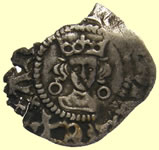 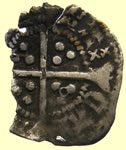 |
||
1247 Henry III hammered silver voided longcross farthing Rev /ONL/VND/ - London mint |
1422-61 Henry VI hammered silver half penny - annulet issue - annulets in VIL and CAL qtrs Obv + hENRIC REX xANGL Rev VIL/LA/CAL/IS - Calais mint 0.33g,14.17 |
||
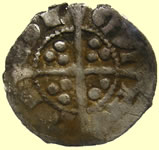  |
  |
||
1300 -1310 Edward Ist hammered silver farthing - new issue inner circles both sides - type 28 Obv EDWARDVS REX A Rev CIVI/TAS/LON/DON- London mint 0.31g,11.72mm |
Taco'd 1272 Edward 1st hammered silver penny | ||
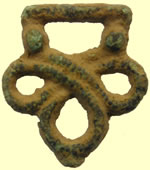 |
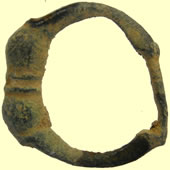 |
  |
|
| 16thC Tudor clothing fastener | Medieval buckle | Taco'd 1247 Henry III hammered silver penny | |
|
|||
Facinating find - 1600 mm long and the figurine is exposing himself !! No clue what it is Museum ID'd it as a toasting fork handle |
|||
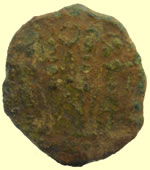 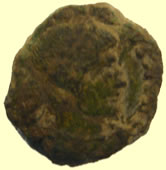 |
 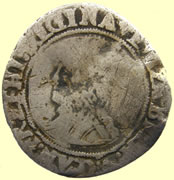 |
||
| Mid 4thC House of Contantine Roman bronze - two soldiers standing | 1560-3 Elizabeth 1st hammered silver sixpence | ||
 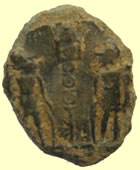 |
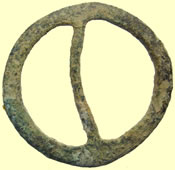 |
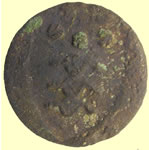 |
|
| Mid 4thC House of Contantine Roman bronze - two soldiers standing | Medieval annular buckle | 18thC Royal artillery button | |
  |
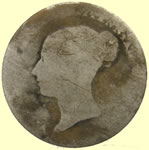 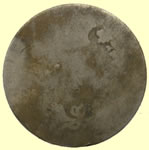 |
||
| 1921 George V milled silver florin (24 pence) | 19thC Victoria milled silver sixpence | ||
  |
|||
70BC Morni Celtic gold qtr stater reported to museum as haord 1.45g, 10.38mm |
|||
  |
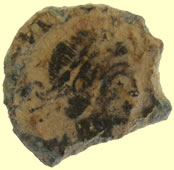 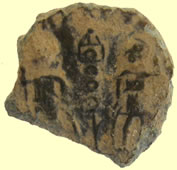 |
||
| Medieval gilded harness pendant | Mid 4thC House of Contantine Roman bronze - two soldiers standing | ||
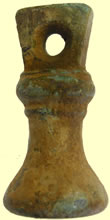  |
 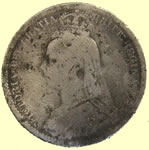 |
||
| Georgian bell trade weight | 1888 Vitoria milled silver sixpence | ||
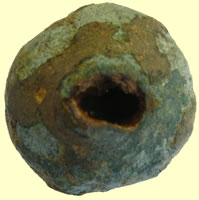 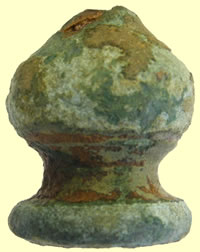 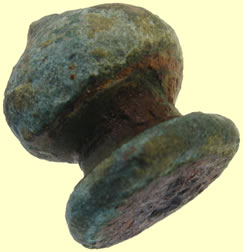 |
|||
| Roman bronze dagger pommel | |||
  |
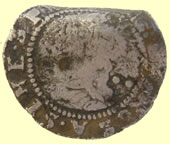 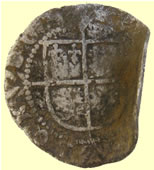 |
||
1205 Willam 1 The Lion - Scottish hammered silver penny Obv WILAM Rev HUE WALTER Moneyer Walter of Perth, Edinburgh and Roxburgh mints |
1569- 71 Elizabeth 1st hammered silver half groat | ||
 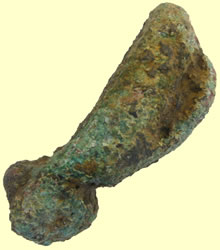 |
|||
| Large Roman item - possible pot foot | |||
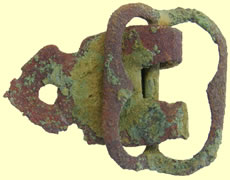 |
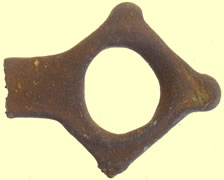 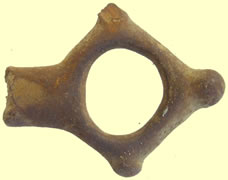 |
||
Post Medieval cast copper alloy single loop buckle frame with plate 1500-1650 AD |
c10thC Saxon harness cheek piece | ||
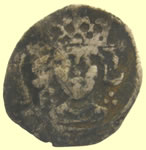 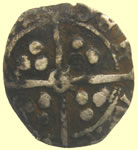 |
 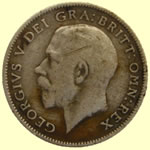 |
||
1471-1483 Edward IV hammered silver penny - XIII - XVa Durham mint D at centre of reverse cross- B & trefoil to side of neck |
1922 George V milled silver sixpence | ||
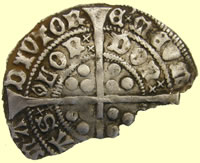  |
|||
1422 Henry VI hammered silver groat - this coin has a mark between a mascule and leaf mark before LON. It has a pellet at centre. There are double satire stops but no pine cone or rosette to match the normal issue. This coin is not in North, die sink error ? Obv + hENRIC DI GRA REX ANGL Z FRANC Rev CIVI/TAS/LON/DON- London mint ( Mascle ? and satire stops) |
|||
 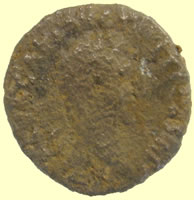 |
|||
Roman silver coin sent for previsional ID - needs a cook to remove crust I'm afraid I can't narrow this one down very much at this time - there are just too many profiles which might possibly match up with this fairly generic and soft-focus, bearded portrait. The obverse legend is no help in its current state. The reverse is too generic to call it for any one ruler with whom it's associated. Mark |
|||
 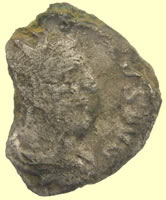 |
|||
3rdC Roman silver forgery sent for ID Can you see a visible area of exposed copper core on this piece in-hand? I can't see any obvious core-exposure in your photos and I don't really see this piece being a contemporary copy or ancient counterfeit at all. It appears to be a fairly good-quality silver Antoninianus of one of the last group of pre-Gallienus emperors. Philip I, Trajan Decius, Trebonianus Gallus, Volusian, Hostilian, Aemilian, etc. There is too little obverse legend and the portrait is a bit too generic - radiate bearded man right - and nothing about the reverse which would allow us to say "Oh, that's a reverse type used by so-and-so" It's another standard, generic standing female personification holding a cornucopiae and could be on anyone's coins. it's unlikely that we will be able to make a really positive ID here. Mark |
|||
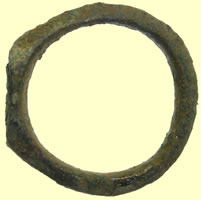  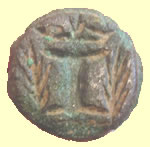 |
|||
Anonymous: letter I early 15thC. An initial with crown above, branches at the side, was a design that became incrreasingly common in the 15thC and was often used on a signet ring . The letter suggests it stood for the owners forename. This example was used in 1424 by Edward Saddler, clerk |
|||
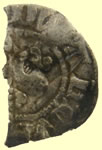 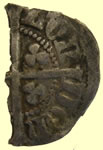 |
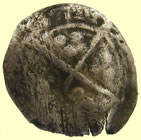  |
||
1327 Edward III hammered silver penny Obv EDWARDVS ******** Rev /LON/DON - London mint |
1327 Edward III hammered silver penny Obv EDWARDVS R******* Rev /LON/D** - London mint |
||
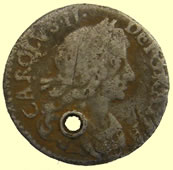  |
|||
| 1679 Charles II milled silver half groat (2 pence) | |||
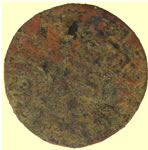 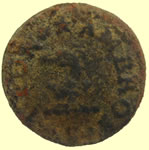 |
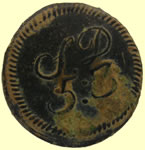 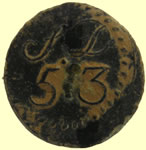 |
||
17thC William Ambrose hammered copper trade farthing Norweb i 549 |
1770 Gold 1/4 guinea coin weight - 5 shillings and 3 pence Ob SD 5 3 |
||
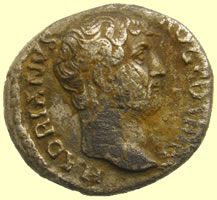  |
|||
| 2ndC Roman silver coin sent for ID | |||
Middle Bronze age 850 BC socketed bronze axe head |
|||
  |
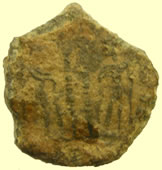  |
||
| 4thC Roman bronze coin sent for ID | Mid 4thC House of Contantine Roman bronze - two soldiers standing | ||
  |
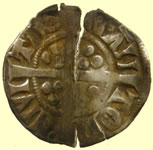 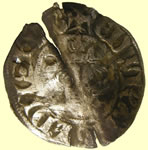 |
||
| 1560- 1 Elizabeth 1st hammered silver sixpence | 1327 Edward III hammered silver penny Obv EDWR ANGL DNS HYB Rev CIVI/TAS/CAN/TOR - Casnterbury mint |
||
  |
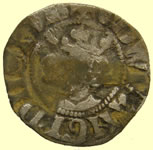 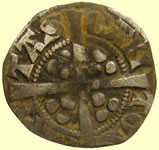 |
||
1247 Henry III hammered silver voided longcross half penny Rev /ONC/ANT - Canterbury mint |
1327 Edward III hammered silver penny Obv EDWR ANGL DNS HYB Rev CIVI/TAS/CAN/TOR - Casnterbury mint |
||
 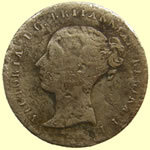 |
 |
||
| 1838 Victoria milled silver four pence | 18thC silver cufflink | ||
 |
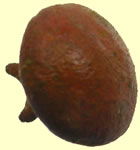 |
 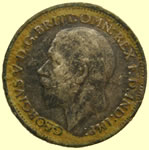 |
|
| Georgian mount | 16thC Tudor button | 1931 George V milled silver coin | |
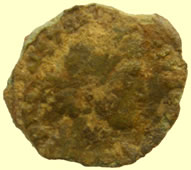 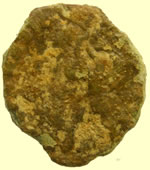 |
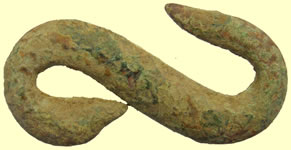 |
||
| Mid 4thC House of Contantine Roman bronze | 16th/17thC S buckle | ||
Saxon silver penny sent to Fitzwilliam for recording and ID - reported as hoard to museum This is 1016 AD Cnut Short Cross type, London, uncertain moneyer, EMC 2014.0102. |
|||
1st BC to 1stC AD Celtic cosmetic woad grinder - 64mm L A boat shaped base element of a wood/cosmetic grinding set- end suspension loop These objects are essentially Celtic in form. During the Celtic period in Britain, a biennial herb "Isatis Tinctoria" was cultivated for the blue dye that could be obtained from it by crushing. The plant is more commonly known as woad. The ancient Britons painted their bodies with the dye which was obtained by grinding parts of the plant between a pestle (missing here) and the mortar. |
|||
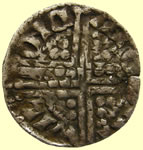 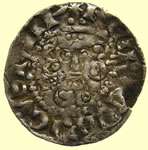 |
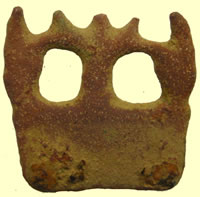 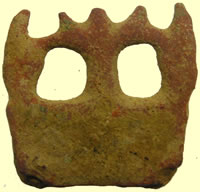 |
||
This coin has a totally new die type from any in Wren ref book, it could be a double strike as the R is at 6 o'clock on Obv 1247 Henry III hammered silver voided longcross half penny Obv hENRICVS REX Rev NIC/OLE /ONC/ANT - Moneyer Nicole of Canterbury mint |
Late Early Medieval (Anglo-Saxon) damaged and incomplete cast copper alloy stirrup strap mount of Williams Class A type 10B. |
||
|
|||
| Roman key | |||
|
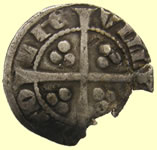 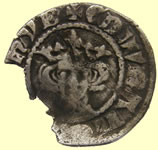 |
||
| Medieval book clasp | 1327 Edward III hammered silver penny Obv EDWR ANGL DNS HYB Rev VILL/BRI/STO/LIE - Bristol mint |
||
 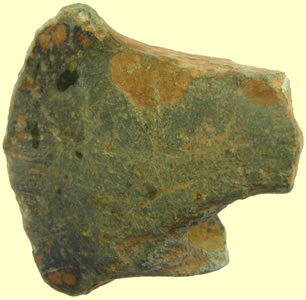 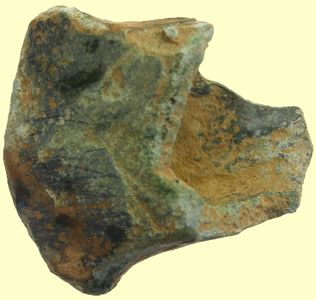 |
|||
Middle Bronze age 850 BC socketed bronze axe head |
|||
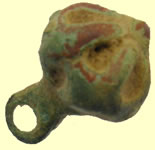 |
 |
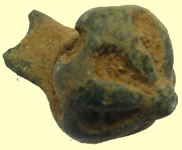 |
 |
| 16thC Tudor button | 16thC Tudor button | 16thC Tudor button | 1782 Phoenix Fire Office button |
  |
 |
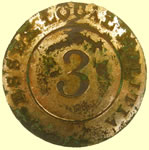 |
|
| 1625 Charles 1st hammered silver penny | RN Surgeon - at Sea - 1805 RN Ass' Surgeon - at Sea - 1805 RN Physician - at Sea - 1805 RN Surgeon - at Sea - 1805 |
'3rd Essex Local Militia gilt (b/m: Charles Jennens. London). This is the 3rd Reg't of the Essex Local Militia. Tim' |
|
 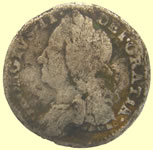 |
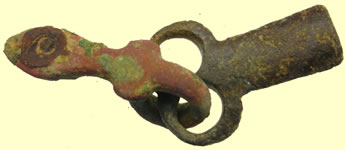 |
||
| 1732 George II milled silver sixpence | Georgian spur and fitting | ||
 |
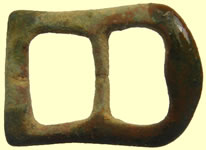 |
 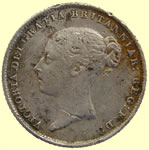 |
|
| 1920 Girl Guides badge | A complete cast copper alloy buckle of post-medieval date. The buckle is a double loop asymmetrical shape Circa 1575- 1700 |
1857 Victoria milled silver sixpence | |
 |
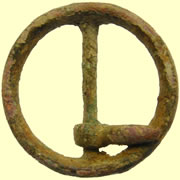 |
 |
 |
| 1500-1700 mount | Medieval annualar buckle | 18thC Royal Navy silver button | 19thC button with Italian or Latin inscription + SIRPNEY |
  |
O/R's - 1782-1810 (right) |
||
| Medieval thimble | The 35th (Royal Sussex) Regiment of Foot was an infantry regiment of the British Army raised in 1701. After serving under a number of different titles, it became the 1st Battalion of The Royal Sussex Regiment in 1881. Its lineage is continued today by the Princess of Wales's Royal Regiment | ||
 |
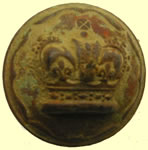 |
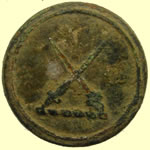 |
 |
| Georgian watch winder | GPO button ? | 19thC livery button | 17thC lead token |
 |
 |
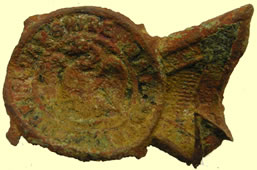 |
|
Royal Artillery buttons Left 18thC - Right - 1840 - 1855 |
19thC hunting button | Military belt buckle | |
 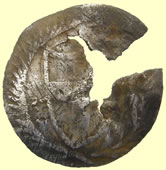 |
  |
||
| 1649 Commonwealth hammered silver half groat | 1247 Henry III hammered silver voided long cross farthing Rev /OLE/ - Moneyer Nicole |
||
 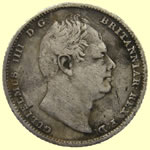 |
  |
||
| 1834 William IV milled silver sixpence | 1247 Henry III jammered silver voided long cross half penny | ||
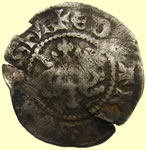 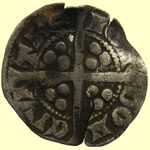 |
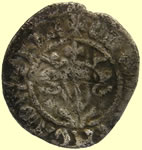 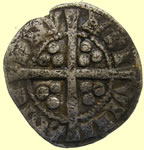 |
||
1272 Edward III hammered silver penny - Known reverse legend error with AA Class 10cf Obv EDWAR A ANGL DNS HYB Rev CIVI/TAS/LON/DON- London mint |
1272 Edward III hammered silver penny - Clas 9b Obv EDWAR ANGL DNS HYB Rev VILL/SCIE/DNV/NDI - Bury St Edmunds mint |
||
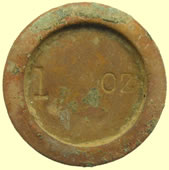 |
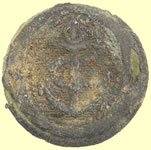 |
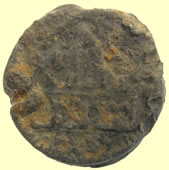 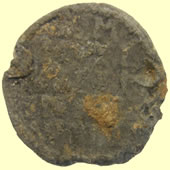 |
|
| Victorian 1 oz trade eight | RN Capt / Commander - 1787 RN Lieutenant - 1787 |
17thC lead trade token | |
 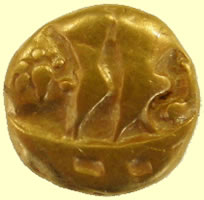 |
|||
70BC Morini Celtic gold 'boat tree' qtr stater - reported to museum as hoard 1.49g, 9.97mm (E) |
|||
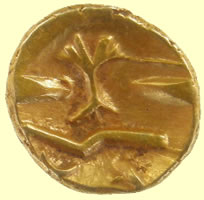  |
|||
70BC Morini Celtic gold 'boat tree' qtr stater - reported to museum as hoard 1.46g, 11.06mm (J) |
|||
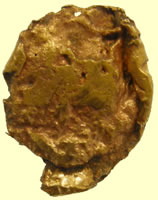 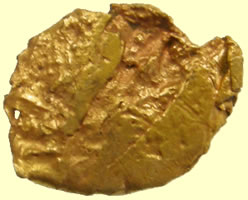 |
|||
| Ancient gold ingot - 1.36g, 14.74mm Gold coin blank ? reported to museum as potential treasure | |||
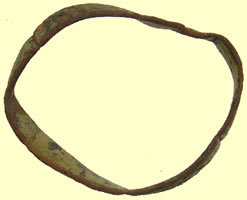 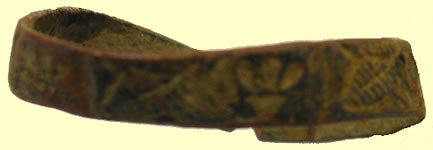 |
|||
| 17thC decorated copper ring - Leaf and crown design | |||
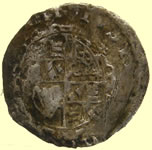 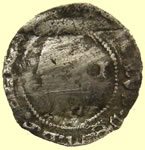 |
  |
||
| 1625 Charles 1st hammered silver penny | 1594 - 6 Elizabeth 1st hammered silver half groat | ||
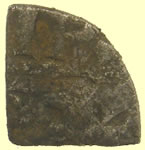  |
  |
||
| 1247 Henry III hammered silver voided long cross farthing | 1604-19 James 1st gold Double crown coin weight - 2nd coinage revalued Obv Crown XI s |
||
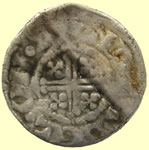 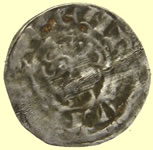 |
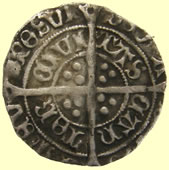 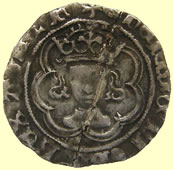 |
||
1215 Henry III hammered silver short cross penny Class 7 Obv HENRICVS REX
|
1485-1509 Henry VII hammered silver half groat - Episcopal issue - King and Bishop jointly, Initial mark Tun, arched crown, plain reverse cross. Ornamental terminal Obv + hENRIC DI GRA REX ANGLIE Rev CIVI/TAS/CAN/TOR - Canterbury mint |
||
|
|
||
| Medieval gilded buckle with integral plate | Medieval knife pommel | ||
 |
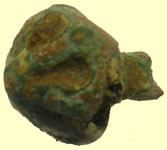 |
  |
|
| Key fob | 16thC Tudor button | Taco'd 1586 Hans Krauwincel II Rose orb Jeton |
|
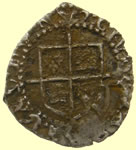 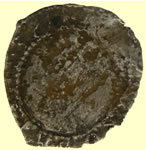 |
 |
 |
|
| 1602 Elizabeth 1st hammered silver penny - " mint mark | Geogian silver button | Bell clapper ? | |
|
|||
| 1272 Edward 1st hammered silver penny - Durham mint | |||
Cantii.
|
|||
50 BC Uninscribed 'P' gold - 'Trophy' Type - 1/4 Celtic gold coin - 1.38g, 11.99mm Beaded trophy quarter, ABC 2243, BMC 435, not in VA. Extremely rare, 10 others known. An interesting Essex type because of its Kentish associations (derived from the Kentish trophy issue but a separate type), it may have been struck by an otherwise unknown offshoot of the Cantii. |
|||
1891 Gold locket - Chester hall mark, maker JS - Possibly John Sutter of Liverpool 2.52g |
|||
 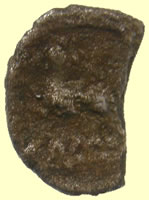 |
|||
Very rare 10 -40 AD Cunobelinus Celtic silver unit - Leaping griffin type Laureate bust r.CVNOBEL in front IINVS behind./ Griffin springing I, CAMV on ex.line. Ref ABC 2909 Classed as excessively rare 'cooking' to remove crust |
|||
 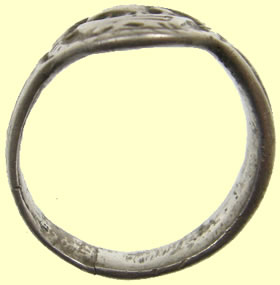 |
|||
| Victorian silver clan ring - Marker JC | |||
 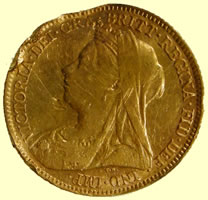 |
|||
| 1897 Victorian milled gold half sovereign | |||
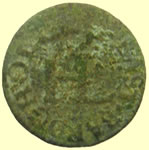 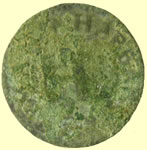 |
 |
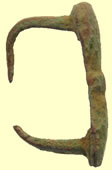 |
|
1655 Henry Lamb of Colchester hammered copper trade farthing |
Post medieval cast copper alloy asymmetrical buckle frame, some with with a pointed knop at the end of the loop The buckle dates from c.1575 - 1700 |
17thc belt slide | |
 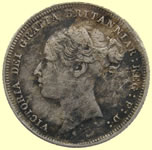 |
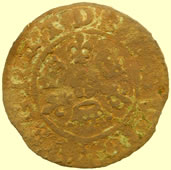 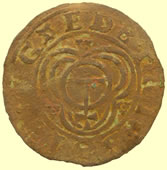 |
||
| 1881 Victoria milled silver sixpence | 1586 Hans Krauwincel II Rose orb Jeton |
||
  |
  |
||
| Medieval lead gaming piece | 1272 Edward 1st hammered silver penny Rev /CAN/TOR - Canterbury mint |
||
  |
|||
| 1stC AD Roman bronze knife pommel | |||
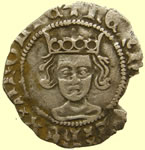 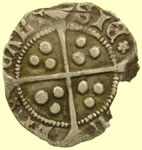 |
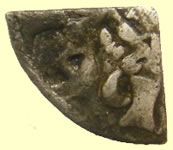  |
||
1427-1430 Henry VI hammered silver penny - Rosette - Mascle issue - Satire stops Obv hENRICVS REX ANGLIE Rev VIL/LA/CALI/SIE - Calais mint |
1247 Henry III hammered silver farthing | ||
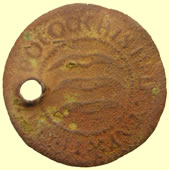 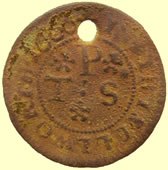 |
 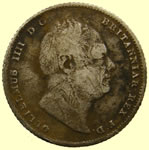 |
||
1666 'His half penny' hammered copper trade half penny Polock 'Thisellworth' |
1831 William IV milled silver sixpence | ||
  |
 |
||
| Continental hammered silver coin fragment | Royal Marines button | ||
|
|||
Stunning 16thC Tudor gilded silver ring - reported as treasure to museum 23.18mm, 8.25g |
|||
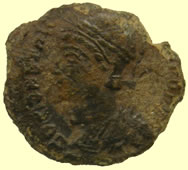 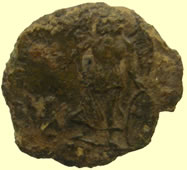 |
 |
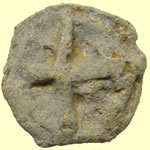 |
|
| Mid 4thC House of Contantine Roman bronze coin | 19thC livery button | 15thC lead token | |
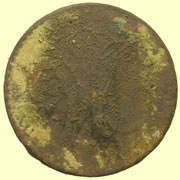 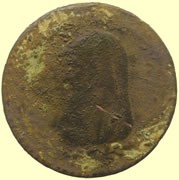 |
|||
Druid's Head on Obverse of 1788 Anglesey Token Parys Mines Copper Tokens
|
|||
 |
 |
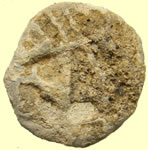 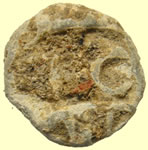 |
|
Post Medieval cast copper alloy single loop buckle frame. 1500-1650 AD |
Georgian watch winders | 17thC lead token | |
 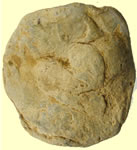 |
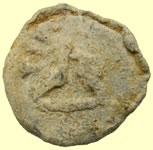  |
||
| 17thC lead token | 17thC lead token | ||
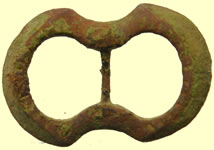 |
 |
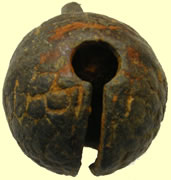  |
|
Post medieval cast copper alloy buckle frame Circa AD 1600 - 1699 |
WWII Civil defence button | 16thC fish scale crotal bell | |
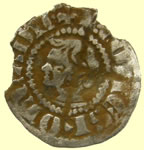  |
|||
Continental hammered silver coin - ID'd by Ohio Drew below Obv *** OYIES hOMIAIM + Rev ETA/NOR/DC ***** Silver penny of Floris V, Count of Holland (1256-1296), minted in Dordrecht c.1285-1296, modelled on the pennies of the British Isles with the profile bust on the reverse remodelled on those of Scotland and the long cross on the reverse on those of England. Grierson (1991) illustrates a very similar example of a later style of penny with a more refined bust of Floris V, minted in Dordrecht, dating from c.1285-96, on page 121, Fig.276. |
|||
  |
 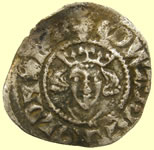 |
||
1247 Henry III hammered silver half penny Rev NIC/OLE - Moneyer Nicole |
1327 Edward III hammered silver penny - Florin type Obv +EDWAR R ANGL DNS HYB Rev VILL/SCIE/DMV/NDI - Bury St Edmunds mint |
||
 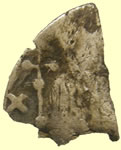 |
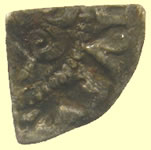 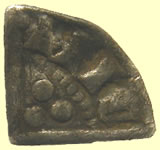 |
||
| 1215 Henry III hammered silver short cross half penny | 1247 Henry III hammered silver farthing Rev NIC/ - Moneyer Nicole |
||
  |
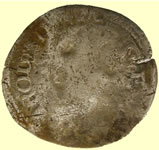 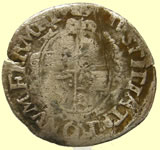 |
||
1351-61 Edward III hammered silver farthing Obv +EDWARDVS REX Rev CIVI/TAS/LON/DON- London mint |
1635-5 Charles 1st hammered silver penny- Crown mint mark | ||
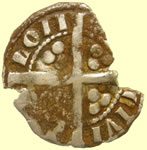 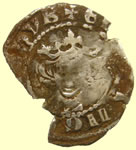 |
  |
||
1272 Edward 1st hammered silver penny - Florin type Obv +ED***ANG ***HYB Rev CIVI/TAS/LON/DON- London mint |
1568 Elizabeth 1st hammered silver half groat - Crown mint mark | ||
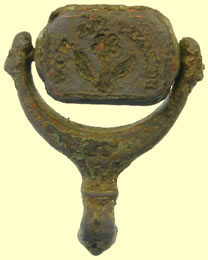 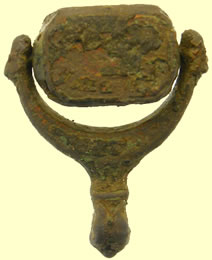  |
|||
Very neat Georgian triple sided seal matrix 'FORGET ME NOT' |
|||
 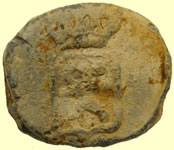 |
  |
||
| 17thC Dutch lead bale seal | 1872 Victoria milled silver sixpence | ||
 |
 |
 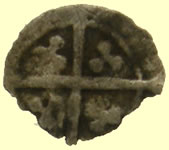 |
|
| 1500-1700 mount | Georgian watch winder | Medieval hammered silver farthing | |
  |
 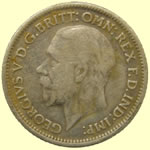 |
||
| 1895 Victoria milled silver sixpence | |||
 |
 |
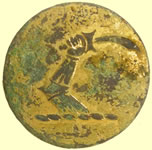 |
 |
| 1600- 1700 copper-alloy cast mount. The mount is quatrefoil in shape with a cusp in each angle | Georgian horse bell | 19thC livery button | 16th Regiment of foot O/R's - 1855-1881 |
 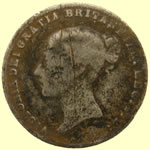 |
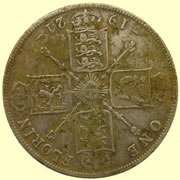 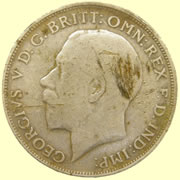 |
||
| 1860 Victoria milled silver sixpence | 1921 George V milled silver florin (24 pence) | ||
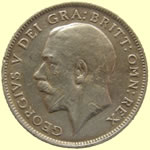  |
 |
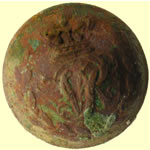 |
|
| 1915 George V milled silver sixpence | Medieval bronze pot foot | Victorian Royal Engineers button | |
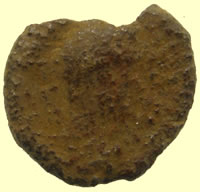 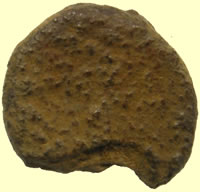 |
|||
| 2mdC Roman silver coin - cooking to remove crust | |||
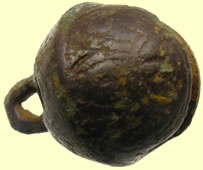 |
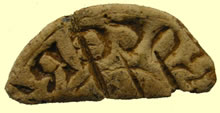 |
||
| 17thC crotal bell | 13thC lead seal matrix - ROGER | ||
 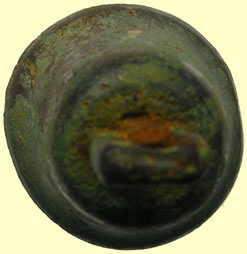 |
|||
| Georgian horse harness bell | |||
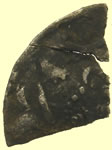 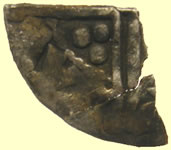 |
|
||
| 1247 Henry III hammered silver half penny | 17thC decorated copper ring | ||
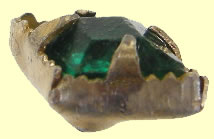 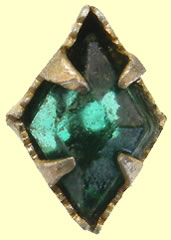 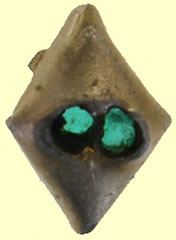 |
|||
Construction looks late medieval c 1500 AD- gold ring top with green stone - reported as treasure to museum 0.26g |
|||
 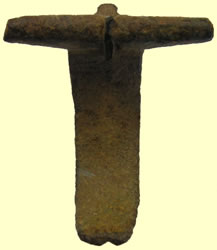 |
|||
circa 1st to 6th C - Most unusual fibular brooch I have seen dug - no classification in Hattatt's ref books. Front panels would have been enamelled. One for the museum experts |
|||
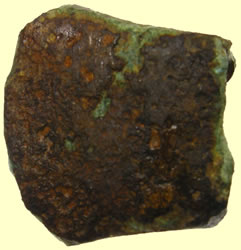  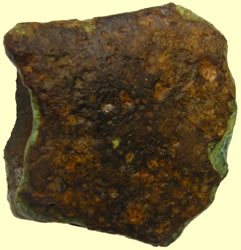 |
|||
| 850 BC Bronze Age socketed axe head | |||
 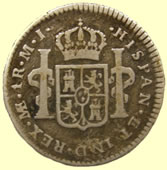 |
 |
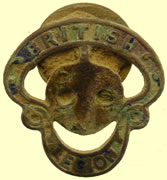 |
|
| 1776 Charles IV Spanish milled silver reale | Post Medieval cast copper alloy single loop buckle frame. 1500-1650 AD |
British legion badge | |
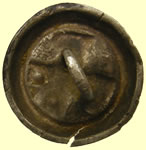  |
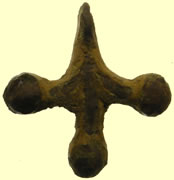 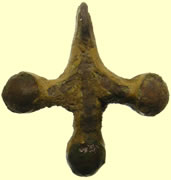  |
||
| 17thC Charles II silver button - reported as treasure to museum | Medieval gilded harness pendant | ||
  |
 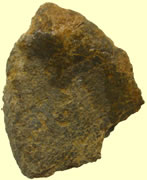 |
||
1247 Henry III hammered silver half penny Rev DEN/DAV - Moneyer David of London mint |
13thC lead seal matrix | ||
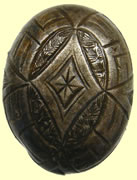 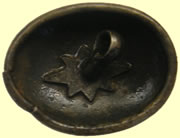 |
|||
| Post Tudor button - reported as potential treasure to museum | |||
  |
  |
||
| 1856 Victoria milled silver shilling | 1215 Henry III hammered silver short cross half penny | ||
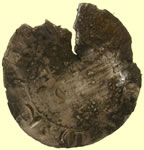 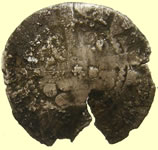 |
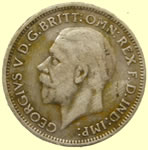  |
||
| Medieval hammered silver penny | 1935 George V milled silver sixpence | ||
  |
  |
||
| 17thC sword hanger | 16thC Elizabeth 1st hammered silver half groat | ||
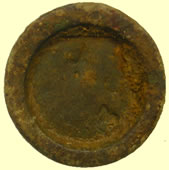 |
 |
 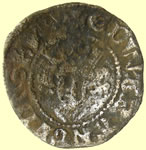 |
|
| George III trade weight - London hall mark | 16thC Tudor seal spoon handle | 1272 Edward 1st hammered silver penny Obv +EDWAR ANGL DNS HYB Rev CIVI/TAS/LON/DON- London mint |
|
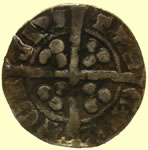  |
  |
||
1272 Edward 1st hammered silver penny Obv +EDWAR ANGL DNS HYB Rev CIVI/TAS/CAN/TOR- Canterbury mint |
1247 Henry III hammered silver half penny Moneyer Walter of Lincoln mint |
||
|
|||
| Medieval gilded silver finger ring - reprted as treasure to museum | |||
  |
  |
||
| 1215 Henry III hammered silver short cross halfpenny | 1606 James 1st hammered silver sixpence | ||
 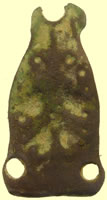 |
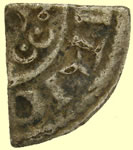  |
||
| c10thC late Saxon stirrup strap mount | 1215 Henry III hammered silver short cross farthing | ||
  |
  |
||
| 1619-25 James 1st hammered silver penny - two dots | 1883 Victoria milled silver thrtee pence | ||
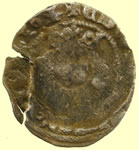 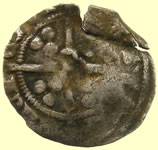 |
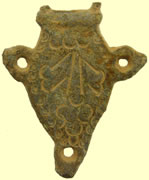 |
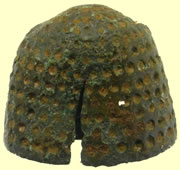 |
|
1327 Edward III hammered silver penny - quatrefoil with pellet at centre of reverse cross Obv + EDW ***** Rev CIVI/TAS/EBO/RACI - York mint |
17thC clothing fastener | 15thC thimble | |
 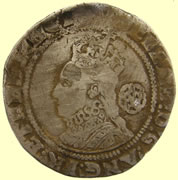 |
 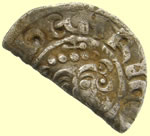 |
||
| 1593 Elizabeth 1st hammered silver sixpence | Taco'd medievla hammered silver penny | ||
 |
 |
 |
|
| Medieval spur rowell | Lead toy horse | 19thC livery button | |
 |
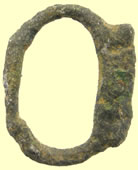 |
  |
|
| Georgian watch winder | Medieval buckle | 1583 Elizabeth 1st hammered silver half groat | |
 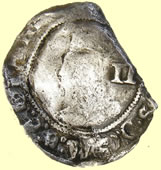 |
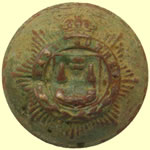 |
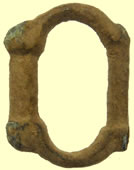 |
|
| 1625 Charles 1st hammered silver half groat | East Surrey regiment | Medieval buckle | |
|
|||
Stunning 11,000 BC Stone Age flint axe head 1300 mm L x 50mm wide |
|||
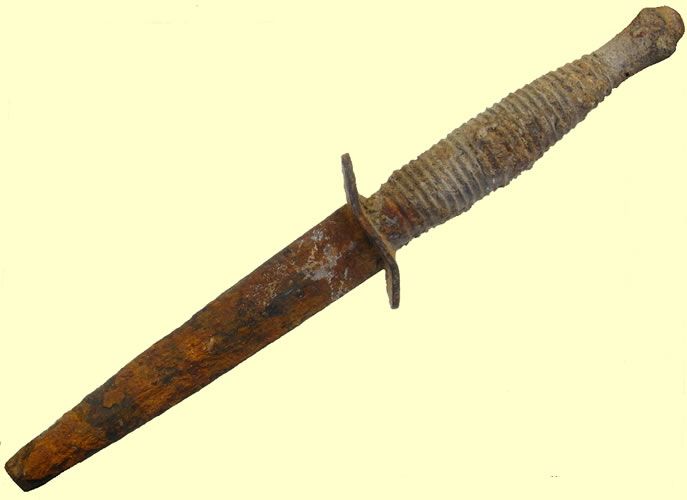 |
|||
Complete WWII Commando dagger - what a neat find - 2600 mm L Scarce Wilkinson Sword Company First Pattern Fairbairn-Sykes Commando DaggerFitted with the early style "wavy" brass cross guard and a knurled brass hilt |
|||
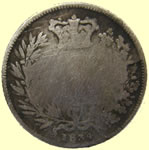 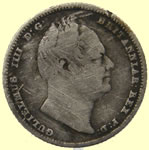 |
  |
||
| 1834 William IV milled silver sixpence | 1864 Victoria milled silver sixpence | ||
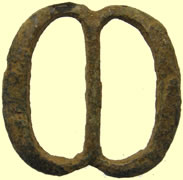 |
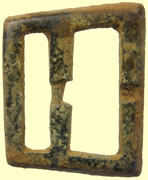 |
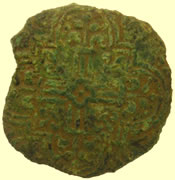  |
|
Post Medieval cast copper alloy single loop buckle frame. 1500-1650 AD |
Georgian buckle | The Standing King series Charles IV 1322-28 French Jetton Obv 'king with sceptre standing beneath a gothic canopy' |
|
 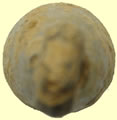 |
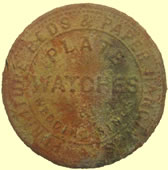 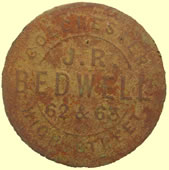 |
||
| Post medieval lead hanging weight | 19thC JR Bedwell of Colchester trade token | ||
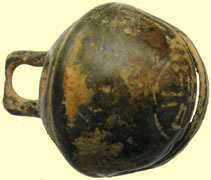 |
  |
||
| 18thC crotal bell | 1634 Charles 1st hammered copper rose farthing | ||
 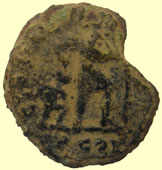 |
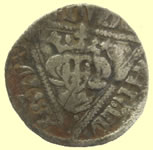  |
||
4thC Roman bronze coin sent for ID This is a perfect example of how, with just the right bits, one only needs a couple tiny bits of surviving legend, etc, to do a full ID - as long as you also know what you're looking for. This is a restored centenionalis of Valens, 364-378, from Arles. The type is GLORIA ROMANORVM with the emperor walking right, dragging a captive and holding a labarum, one of the most common types of the later 4th century. Although this type was struck at selected mints by no less than 6 different emperors, we can tell that this particular piece names Valens by the lone "S" visible at 1:00-2:00 on the obverse - only his legend (of the emperors who struck at this mint) would leave the terminal "S" in the emperor's name standing more-or-less alone in that position. We can tell the reverse type, despite the paucity of legible legend and large missing chip, because we have a decent silhouette of the subject figures on the reverse. The small amount of semi-legible legend appears to begin "GLORI" between 7:00 & 10:00 on the reverse and reinforces the type-ID. Where we really luck out is the clear mint mark - PCON - for the mint at Arles which was going by the name of Constantina at that time. (Of course, many a beginner has mistaken the Arles mint marks from this period for Constantinople.) Due to the reign of the usurper Magnus Maximus and his control of the mint at Arles during the period in which the "extra" rulers were striking this type in central Europe, only the earliest 3 emperors associated with this type (Valentinian I, Valens & Gratian) struck it in significant numbers at Arles. There was a very brief period during which it was struck for Valentinian II, but those pieces are rare and his legend, like his father's, winds up with its terminal "S" around 3:00 or off the tip of the portrait's nose rather than by the forehead. So we have Valens, GLORIA ROMANORVM, from the mint of Arles - and furthermore, due to the apparent lack of any additional fieldmarks on the reverse, and the fact that the captive is shown kneeling we can date it to the beginning of the 3rd period at this mint. So we can even date it as closely as 375-378. RIC IX, Arles, # 18a.\ Mark |
Irish 1279-1301 Edward 1st hammered silver penny - Trefoil of pellets on Kings breast, pellet at start of Obv legend Obv EDWR ANGL DNS HYB Rev CIVI/TAS/DUBL/INIE - Dublin mint |
||
 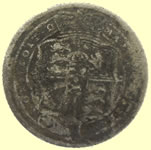 |
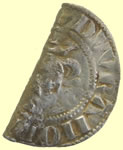  |
||
| 1817 George III milled silver sixpence | Taco'd 1272 Edward 1st hammered silver penny Obv +EDWR ANGL DNS HYB Rev CIVI/TAS/*** |
||
 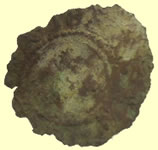 |
  |
||
| 17thC Henry Cordall of Chelmsford Essex hammered copper trade farthing | 1377 - 99 Richard II hammered silver half penny Obv +RICAR* .REX.ANGL Rev CIVI/TAS/LON/DON London mint |
||
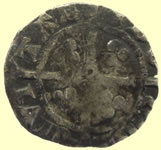 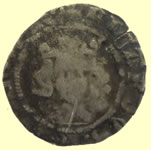 |
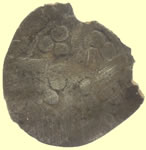 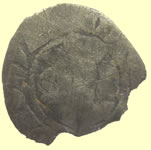 |
||
1377- 1399 Richard II hammered silver penny - quatrefoil with pellet at centre of reverse cross Obv +RICARDVS.REX *** Rev CIVI/TAS/EBO/RACI - York mint |
1272 Edward 1st hammered silver penny Obv +EDW**** HYB Rev CIVI/TAS/*** |
||
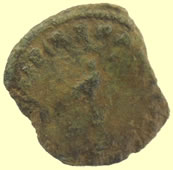  |
  |
||
4thC Roman bronze coin sent for ID Although I can't give you quite the depth of detail - chapter and verse - on this one as I was able to cite for the Valens, it is another case of the legend break on the obverse making all the difference in the ID. This is a billon half-majorina with the FEL TEMP REPARATIO reverse legend. This is one of the scarcer types which doesn't pair the otherwise ubiquitous fallen horseman with this legend. Instead, it has a radiate phoenix standing left on either a globe or a small pyramidal mound - this one is the mound type, of course. These were struck only for a limited time right at the beginning of the FEL TEMP series of types. Because it was a half-denomination and the majorina, the denomination of which it was a half, declined in size so quickly, it became indistinguishable by size early-on. The result was that these were only struck between 348-350. They were only struck for Constans and Constantius II, and given the break in the legend - beween the "A" and the "N", it must be Constans. (337-350). There is no surviving part of the mint mark visible, so that's about all I can tell you on this one. Mark |
1216 Henry III hammered silver short cross penny - Class 7b Obv hENRICVS REX Rev +WILLEM TA ON CANT - Moneyer Willem TA of Canterbury mint |
||
  |
 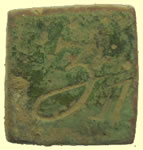 |
||
| 1869 Victoria milled silver sixpence | 18thC apothecary weight | ||
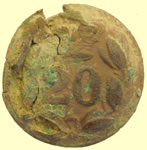 |
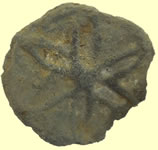 |
  |
|
| 1850 - 20th Regiment of foot button | 15thC lead token | 1216 Henry III hammered silver short cross penny - Class 8b2 Obv hENRICVS REX Rev + NIChOLE ON CANT Moneyer Nicole of Canterbury mint |
|
 |
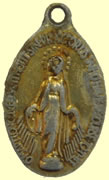  |
||
| ET | Victorian gilded religious medallion | ||
  |
 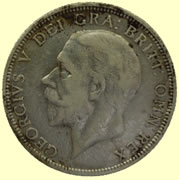 |
||
| 13th Medieval Continental sterling imitation hammered silver penny | 1930 George V milled silver florin (24 pence) | ||
  |
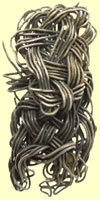 |
 |
|
1327 Edward III hammered silver penny Obv EDWA *** ANG Rev /EBO - York mint |
Victorian silver wire bracelet fragment | 1500-1700 hooked mount | |
 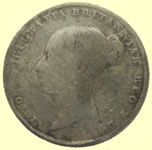 |
 |
||
| 1849 Victoria milled silver sixpence | Georgian trade weight - Crown G cipher London | ||
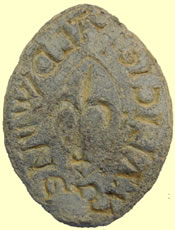  |
|||
Stunningly crisp 13thC lead vessica seal matrix S'ALICIE ALDWINE Seal of Alicie Aldwine |
|||
 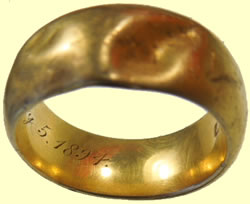 |
|||
Double skinned Victorian gold ring - Chester hall mark 18 carat - Date letter 'F' 1889 Inscription - 'Alie July 5 1894' |
|||
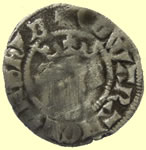 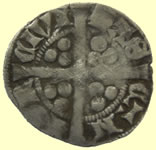 |
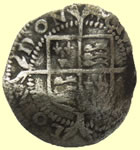 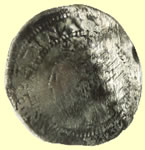 |
||
1272 Edward 1st hammered silver penny Obv +EDWAR ANGL DNS HYB Rev CIVI/TAS/CAN/TOR- Canterbury mint |
16thC Elizabeth hammered silver penny | ||
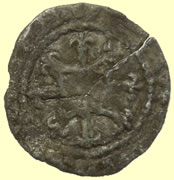 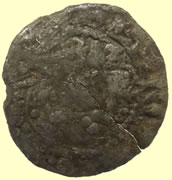 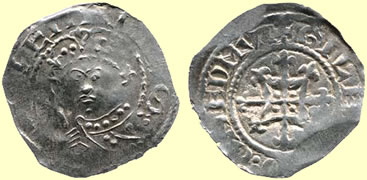 |
|||
| Rare 1100 AD Henry 1st hammered silver penny - Quadrilateral on cross fleury type | |||
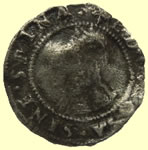 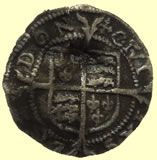 |
 |
||
| 1560-1 Elizabeth hammered silver penny - Corss Crosslet mint mark | Post Medieval cast copper alloy single loop buckle frame. 1500-1650 AD |
||
  |
  |
||
1216 Henry III hammered silver half penny Obv hENRICVS REX Rev VF.ON.LV - Moneyer Ravf of London mint |
1216 Henry III hammered silver half penny Obv hENRICVS REX Rev + ELI - Moneyer Elis of London mint |
||
 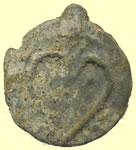 |
|
||
| 17thC lead token | Medieval knife pommel | ||
|
|||
| Medieval gilded bar mount | |||
  |
|
||
Charles 1st/ 2nd Jetton ? Obv Crown C |
Roman buckle | ||
  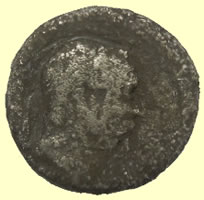 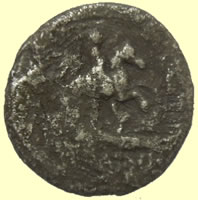 |
|||
| 2nd C Roman silver coin - cooking to remove crust | |||
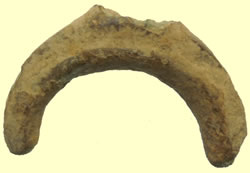  |
|||
| 1stC 2inch dia Iron Age bronze ring with recess, probably a Terret ring | |||
 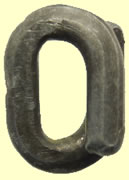 |
 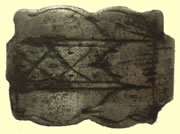 |
||
| Victorian silver link | 18thC silver clog fastener - Maker CH Charles Hougham London |
||
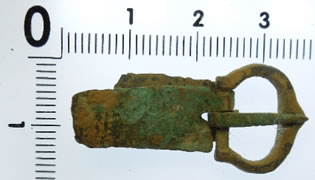  |
|||
| Medieval buckle with integral plate with scale | |||
 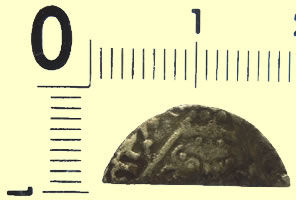 |
|||
| Medieval halfpenny with scale | |||
  |
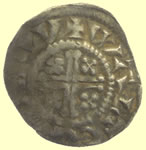  |
||
1180-1189 Henry II hammered silver short cross penny - Class 1b to 1c Rev hENRICVS REX Obv + DAVI. O *** - ND Moneyer Davi of London |
1216 Henry III hammered silver short cross penny - Class 6c1 Rev hENRICVS REX Obv + WALTER ON LV - Moneyer Walter of London |
||
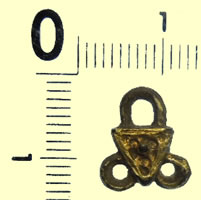 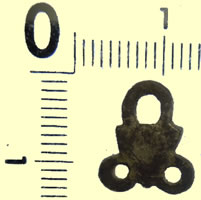 |
|||
| 16thc Tudor gilded silver jewelry link - reported as treasure to museum | |||
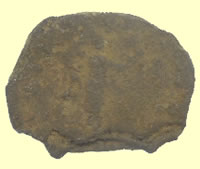  |
 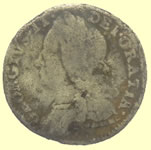 |
||
| 2ndC Roman silver - cooking to remove crust (CP) | 1737 George II milled silver sixpence | ||
 |
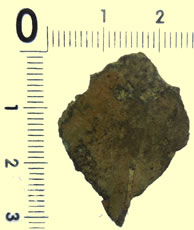  |
||
| Medieval casket key | 1stC Roman Rosette brooch | ||
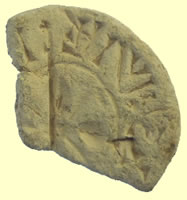 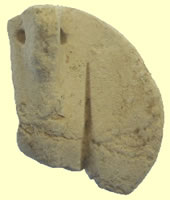 |
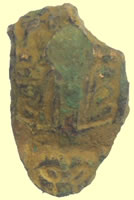  |
||
| 13thC lead seal matrix - suspension type | Zoomorphic gilded Saxon copper plate | ||
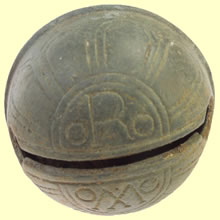 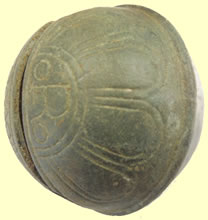 |
  |
||
| Huge 18thC cow bell | 1812 The Emperor Alexander medallion Alexander I of Russia |
||
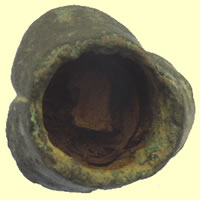  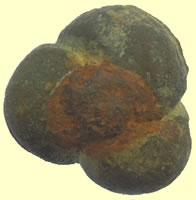 |
|||
| Medieval dagger pommel | |||
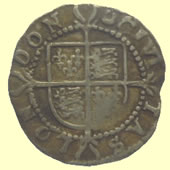 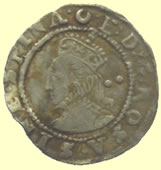 |
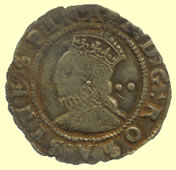 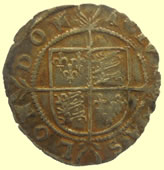 |
||
| 1587 -9 Elizabeth 1st hammered silver half groat – Crescent mint mark | 1582-3 Elizabeth 1st hammered silver half groat – Bell mint mark | ||
|
|||
| Medieval knife handle | |||
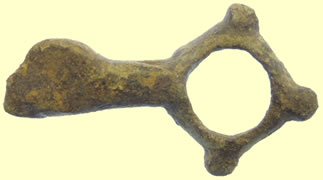 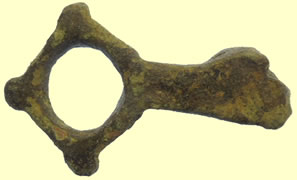 |
|||
| C10thC Saxon harness cheek piece | |||
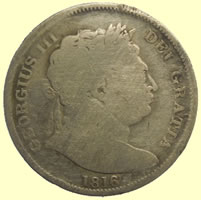 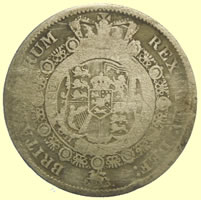 |
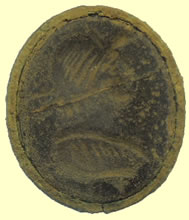 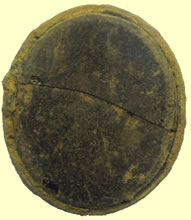 |
||
| 1816 George III milled silver half crown (30 pence) | Georgian seal matrix | ||
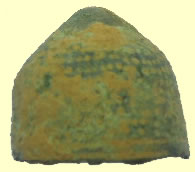   |
|||
| Early cast brass thimble - 'Light duty thimble' - 1350 -1450 AD | |||
 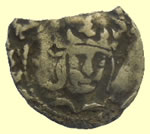 |
  |
||
| 1461 Edward IV hammered silver penny - B on centre of reverse cross Durham mint | 2ndC Roman silver coin - cooking to remove horn silver crust (JC) | ||
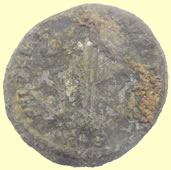 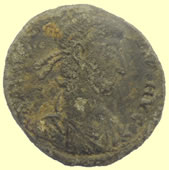 |
 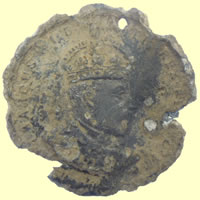 |
||
Nice condition larger than average 4thC Roman 22.04mm dia, 3.91g - sent for ID |
1901 Edward VII crowned medallion | ||
  |
 |
||
1770's 4 shillings and 6 pence coin weight Obv S4 6D |
Neat Roman cell phone clock !! | ||
 |
  |
||
| Unusual 17thC decorated buckle | 17thC John Digby grocer of Coggeshall Essex hammered copper trade farthing | ||
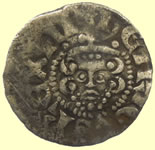 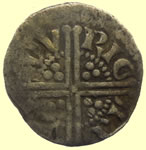 |
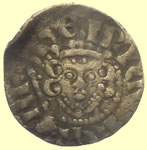  |
||
1247 Henry III hammered silver voided long cross - Class IIIc Obv hENRICVS REX III Rev RIC/AR/DON/LDV -Moneyer Richard of London mint |
1247 Henry III hammered silver voided long cross - Class Va Obv hENRICVS REX III Obv ON/CAN/TGIL/BER - Moneyer Gilbert of Canterbury mint |
||
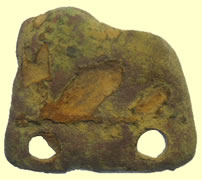 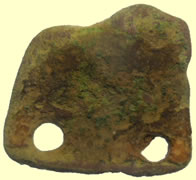 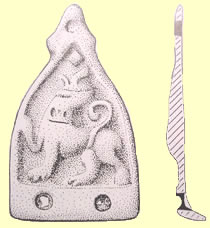 |
|||
Late Saxon stirrup strap mount Class A Type 11a Sub tringular mount depicts a Lion looking upwards with its front paw raised and tail curled between its legs and over the back found |
|||
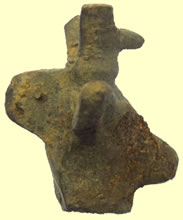  |
 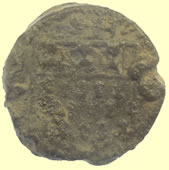 |
||
| 17thC Stag's Head drinking vessel handle | Very unusual medieval lead token with heraldic shield on Obv | ||
  |
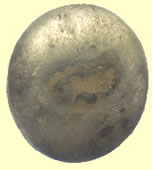 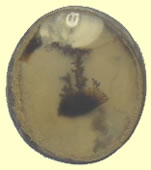 |
||
1247 Henry III hammered silver voided long cross farthing Rev /LEM/ Moneyer Willem |
Victorian silver cufflink with stone | ||
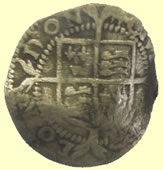 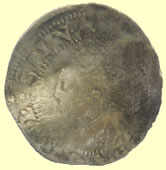 |
|
||
| 1569- 71 Elizabeth 1st hammered silver half groat | Roman bronze terret ring | ||
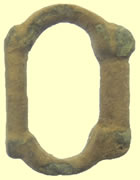 |
  |
||
| Roman buckle | Victorian 'gold cased' copper finger ring | ||
 |
|||
| 16thC Tudor S buckle | |||
  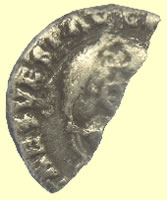 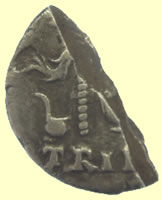 |
|||
'Cooked' silver Roman - sent to Mark Lehman for ID This one participates in that good luck, to a certain extent at least - we have just enough of the "right stuff" on the remaining fragment of this piece to ID and attribute it quite precisely. It is almost half of a denarius of Vespasian (69-79 AD.) The complete obverse legend should be: "IMP CAES VESP AVG P M COS IIII", laureate head right. The complete reverse legend should be: "AVGVR (at the top) TRI POT" with an assortment of religious implementia - the simpulum, aspergillium, jug & lituus. These were symbols of the augurate and the potificate, Vespasian being the holder of both of those titles in addition to the Potestas Tribunicia. This reverse type is copied from a coin of Octavian. The Flavian emperors created a lot of revival types and coins which were minted as an homage to some of their more popular predecessors among the Julio-Claudian family - of which this is an example - perhaps because they were the first emperors who were not of Julio-Claudian lineage and were hoping to associate themselves with the Julio-Claudians in the popular mind by reviving those emperors' coin types. Minted at Rome in 70-1 AD. Mark
|
|||
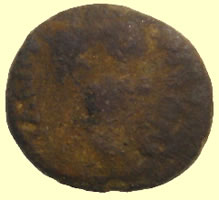 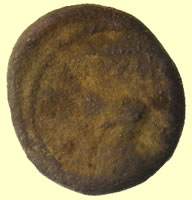 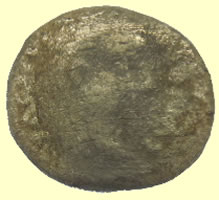 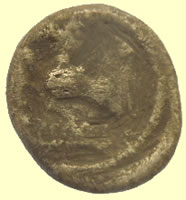 |
|||
'Cooking' Celtic silver - looks like a very rare Cunobelin silver bust type Back into the 'cooker' to remove more crust |
|||
   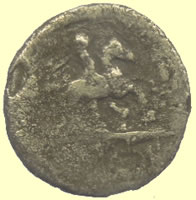 |
|||
'Cooking' Roman silver - could be a BC type Back into the 'cooker' to remove more crust |
|||
Finished cooking this Roman silver coin sent for 2nd ID - cooking to remove crust (Ed) We will need to see what appears on the obverse - particularly in the legend - before I can be completely certain who this is beyond "an Antonine woman". It's highly unlikely to be Faustina Sr. since the main body of her coinage is posthumous and the reverse type - PVDICITIA - would be a quality or virtue only of a living woman. I suspect Faustina Jr. for the following reasons: The shape of the head and the hair style seem to strongly suggest the Antonine era, and although it could be either Faustina Jr. (issued under Antoninus Pius or Marcus Aurelius), Lucilla or Crispina, the length of the obverse legend suggested under the encrustation is likely only on a coin of Faustina Jr. But we'll have to wait and see what the cooker reveals on the obverse. Mark Now that we can read (or at least puzzle-out) the obverse legend well enough to be certain that it reads: FAVSTINA AVGVS-TA AVG PII F = "Faustina, Augusta, Devoted Daughter of the Emperor" She was honored as Augusta in her own right when her mother died in 147, this was several years before before her husband, M. Aurelius was made Augustus (161). She married Marcus Aurelius in 145 and died a few years before him in 175. We can now be certain that this is a lifetime issue for Faustina Jr. which was issued by authority of her father, Antoninus Pius. This issue dates to 156-7 from the mint at Rome. This is an unusual form of obverse legend and is almost unique to this specific type, although this type is not considered particularly scarce. References include: RIC III 508a; RSC 184; BMC1092; and SRCV 4707. Mark
|
|||
  |
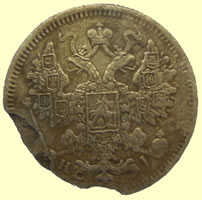 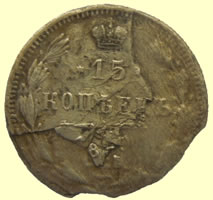 |
||
Finally cooked continental billion coin - 37% silver 1866 Leopold - German states - Lippe Detmold 12 EIEN THALER 2 1/2 SILBER GROSCHEN Obv PAUL FRIERE.EMIL LEOPOLD FURST Z, LIPPE |
Finally cooked continental billion coin - 37% silver 19thC Russia Alexander II - 15 Kopeks silver coin PObv - CII b HI |
||
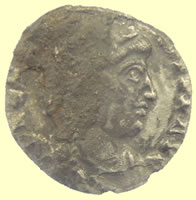    |
|||
| 'Cooking' Roman silver - could be a 5thC type - Col John | |||
 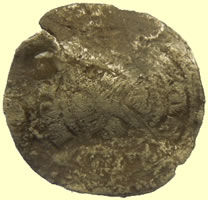 |
|||
| 'Cooking' medieval hammered silver half groat | |||
As dug, annealed and fixed
|
|||
1180 Henry II hammered silver short cross coin - Class 1b Obv HENRICVS REX
|
|||
As dug, annealed and fixed
1422-27 Henry VI hammered silver penny - Annulet issue Annulets by neck, annulets in opposing quadrants in reverse crossObv HENRICVS REX |
|||
| See also 2014 March Finds Page 1 | |||
 |
|||



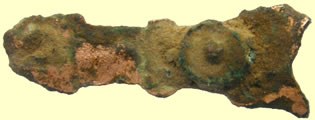
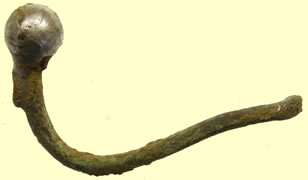
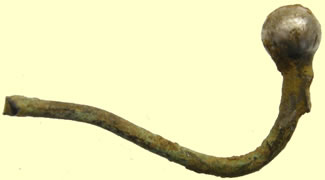
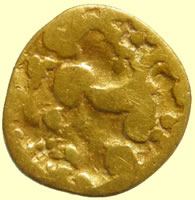
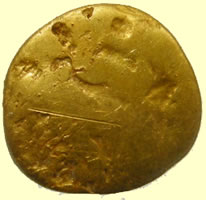
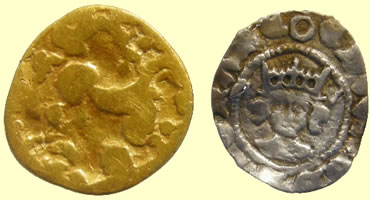
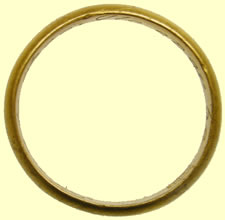
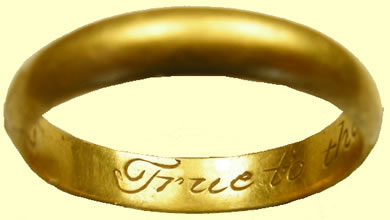



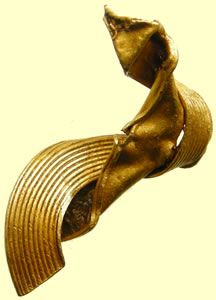
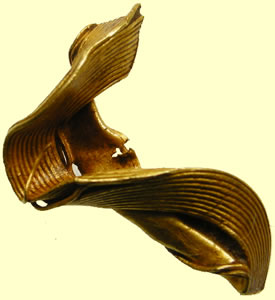
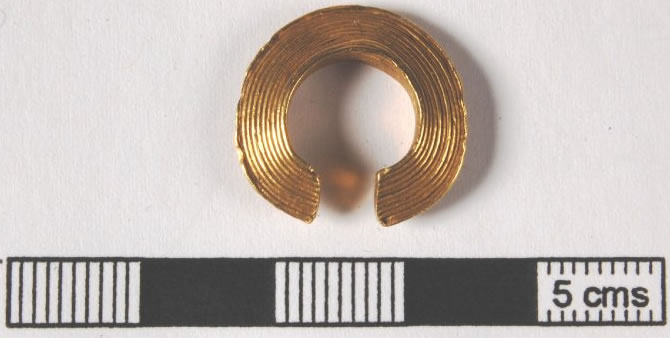
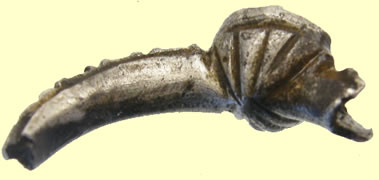
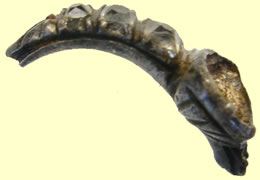
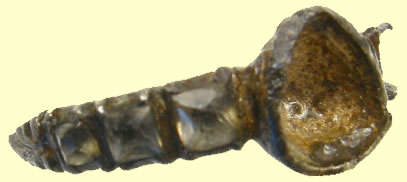


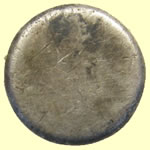
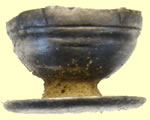

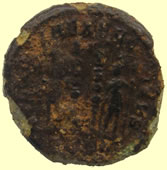

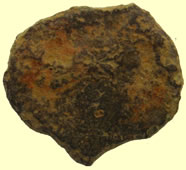

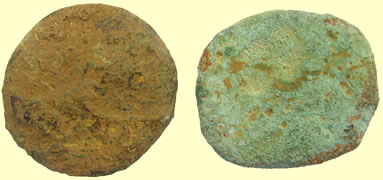


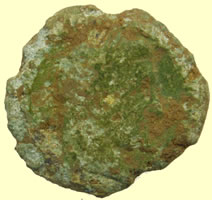
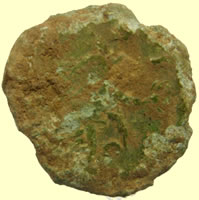




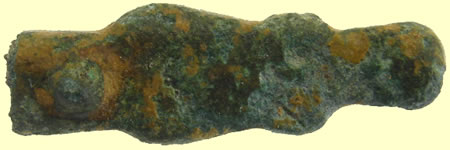




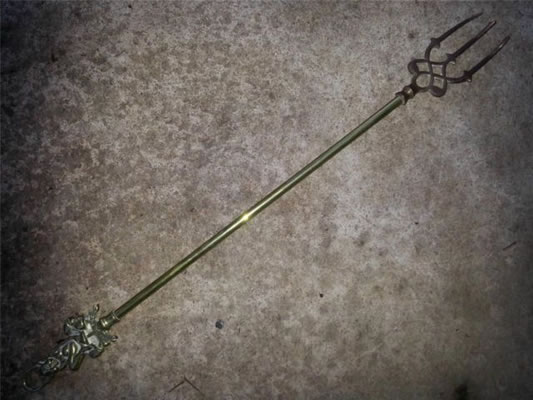


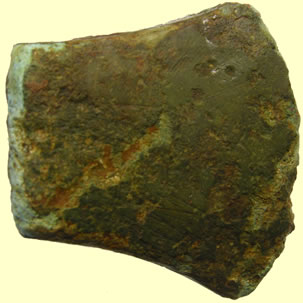
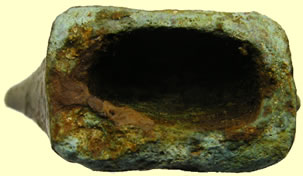
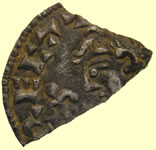
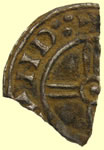

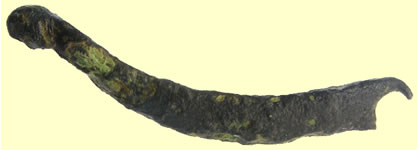

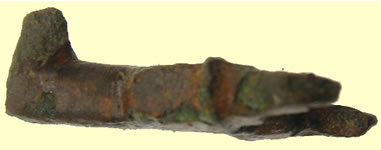




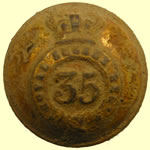
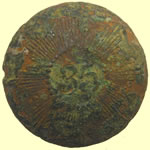
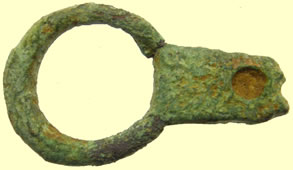
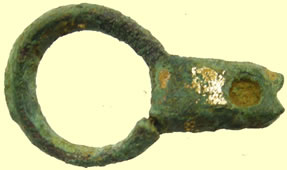


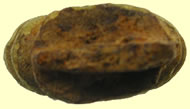
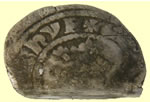
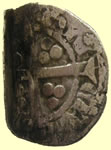
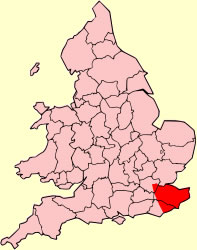 The Cantiaci or Cantii were a Celtic people living in Britain before the Roman conquest, and gave their name to a civitas of Roman Britain. They lived in the area now called Kent, in south-eastern England. Their capital was Durovernum Cantiacorum, now Canterbury.
The Cantiaci or Cantii were a Celtic people living in Britain before the Roman conquest, and gave their name to a civitas of Roman Britain. They lived in the area now called Kent, in south-eastern England. Their capital was Durovernum Cantiacorum, now Canterbury.